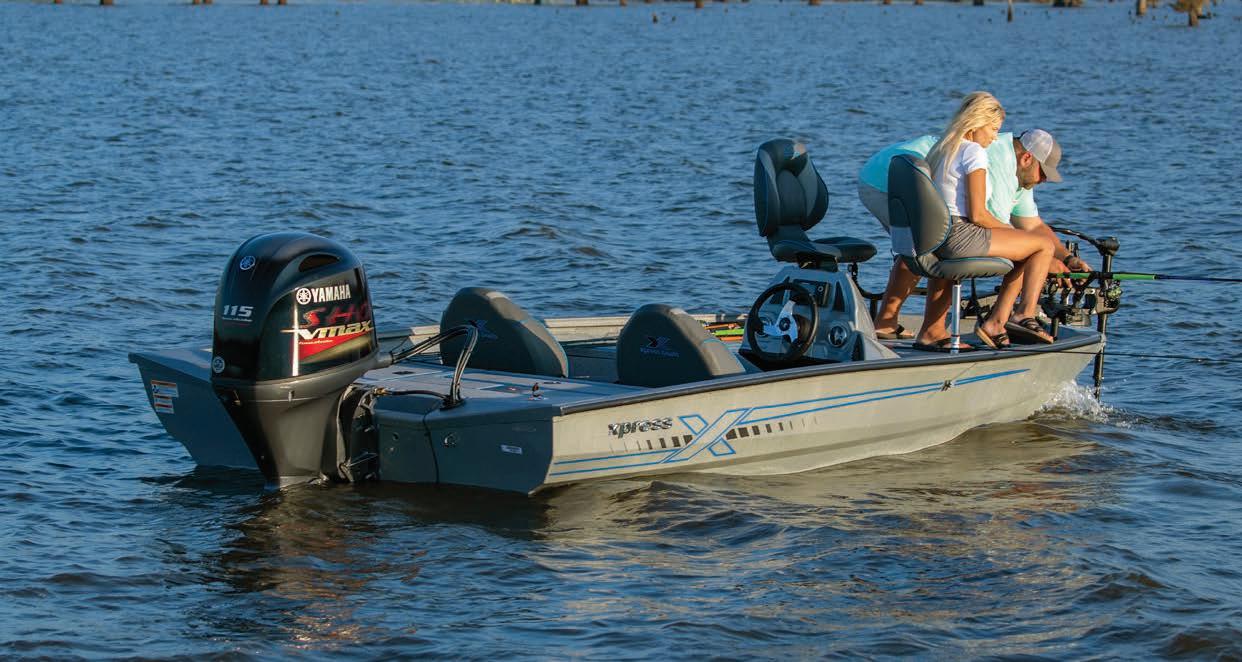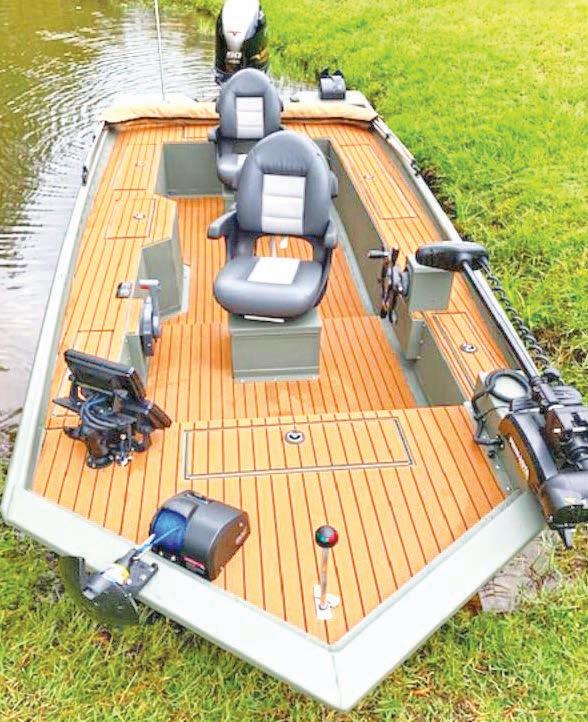






















































































































































































 By Astrid DeGruchy
By Astrid DeGruchy
icked Tuna is a show my ancé, Capt. Brandon Storin, and I like to watch. As an avid angler betrothed to a charter captain, I think it’s pretty cool to watch these guys reel in giants, but it’s even cooler to do it Brandon and I wanted this experience, so we went on a charter with the legendary crew of the “Hard Merchandise.” Docked in Gloucester, Mass., the boat is very spacious with a heated cabin, full head and all the latest electronics. Capt. Joe Marciano and his Mate, Jay, are exactly as they are from the show, and their skillsets for catching

During our time with them, conditions were a bit rough. It called for us leaving the docks earlier than anyone else, and while riding out, you could really see how meticulous they are in each part of the rigging and set up. During the boat ride, conversation was great, with plenty of laughs to go around. Before we knew it, we were at the tuna grounds.
In the midst of catching and soaking baits and waiting for the bite, the crew made us fresh breakfast and it was amazing. We had bacon and scrambled eggs with lobster.
e experience is very much like what you would expect from watching the show. ere’s lots of refreshing baits and waiting for a bite. When they mark sh on the sonar, the enthusiasm from the crew is amazing, just like on television. Capt. Joe and Jay jump up, yelling “WE’RE MARKING!” Adrenaline starts pumping with anticipation as you hope everything is lined up perfect enough to get a bite.
Fortunately, we did get tight, and I have never seen a sh take such a wild and ferocious run… several times. I was up to battle this sh with coaching from Capt. Joe and Jay. ere is nesse needed to ght a giant like this, and a cra in staying tight and knowing when to let him run. Every second spent reeling elevated the hope that we might land this big tuna. Yet there was also anxiety. If you’ve watched the show, you know that losing one of these monsters is a very real possibility.
We battled the sh for a while. Gaining where I could, adrenaline kept me pumping while the crew maneuvered the boat. e communication is constant as everyone works together.
Finally, I saw this huge beast start surfacing. Capt. Joe moved in with the harpoon, ready to take the shot. Everything happened so quickly! e beast surfaced, and Capt. Joe drilled it with a perfect gill shot. It wasn’t over yet, but it was just a matter of time. A er the sh made one last run, taking a bunch of rope, we hauled it back in and roped its tail. At that point, I knew I had landed my top bucket-list sh.
It was an amazing experience, and it felt like we were literally in an episode of Wicked Tuna. What you see from the show is what you get in person. ere is no script; nothing is fake. ere is only grit, talent and hope, and these guys have all that.

e Hard Merchandise team recently launched Angelica Seafoods, where one can order fresh blue n, lobster, scallops, oysters and more to be delivered to your door. If you plan a trip to Boston and want to catch a sh of a lifetime, book a charter with the Hard Merchandise.
For more information on the Hard Merchandise, visit www.angelica sheries.com/fv-hardmerchandise.
IG: @catching_astrid @bnmbean @hardmerchjoe @melodyredwing @hardmerchandisejay.
Have you ever dreamed of holding a $100,000 bill in your hand? How about a group of bills that includes $100,000, $10,000, $1,000 and $100 bills? Now you can, with these gold currency reproductions from the O cially Licensed Smithsonian® Series-1934 100 mg 24-Karat Gold Certi cates, which includes all four of the above Notes!









The actual Series-1934 Gold Certificates were legal tender, but were not intended for circulation—in fact private ownership was banned. Rather, these Notes were intended for transferring funds between Federal Reserve banks. The Certificates legally represented their worth in gold, and didn’t require a forklift to move!





By 1960, the Notes had served their purpose, and most were destroyed. Only a small number still exist, including those held by the Smithsonian.


These replica Series 1934 Currency Notes were reproduced from originals housed at the Smithsonian— and include the official Smithsonian sunburst. Best of all, using state-of-the-art




technology, 100 milligrams of 24K gold are transformed into currency-sized works of art! Each will arrive graded in Gem Uncirculated (Gem UC) condition by Paper Money Guaranty (PMG).


For this first-ever release, only 5,000 of these Series 1934 Gold Certificate Currency Notes were produced. These are the very first of their kind, created with 100 mg of 99.9% pure gold. Get the complete Set or get them individually. They’re going fast, and our limited supply will not last, so secure yours now!
1934 Smithsonian 24k Gold Certificates



$100 $49.95 SAVE $10, Only $39.95 each! + s/h $1,000 $49.95 SAVE $10, Only $39.95 each! + s/h $10,000 $49.95 SAVE $10, Only $39.95 each! + s/h $100,000 $49.95 SAVE $10, Only $39.95 each! + s/h
Acquire the entire collection and SAVE even MORE… 4-Pc. Set $199.80 SAVE $50+, Only $149 each! & FREE SHIPPING
For
product total over $149 before
Not
with
on












Please mention this code when you call.


That’s quite a headline for a 17-year-old high school student from Clewiston, Fla. who loves bass shing.
I spoke with Hilary while she was in Palatka, Fla. preparing to sh the Florida Bass Nation tournaments on the St. Johns River, and her enthusiasm and passion for the sport of bass shing were impressive.
Last year, at 16, she nished h at the State Championship of the Florida Bass Nation with a total weight heavier than 19 pounds. She’s hoping to do even better this year.
I asked her if she could remember when she rst started shing, and she laughed as she guessed that she was “probably only 2 years old.” A er all, she does come from a pretty well-known family of professional bass shermen.

Her grandfather, the legendary Roland Martin, is one of the greatest bass shermen of all time. Her father, Scott, won the 2011 Forest Wood Cup Championship, and also has 45 top-ten nishes and eight tour victories in the FLW and hosts the Scott Martin Challenge.
But things are di erent today than they were
 By Don Norton
By Don Norton
Iin the past. Today, social media is the key to reaching your audience, and Hilary has done an incredible job on both YouTube, with over 100,000 subscribers, and Instagram with 103,000 followers.
Most of her videos are bass shing, although she’s had some very interesting saltwater shing videos, as well.


Hilary said she started taking bass shing seriously when she was 15 years old, and at 16, joined the Florida Bass Nation Series.
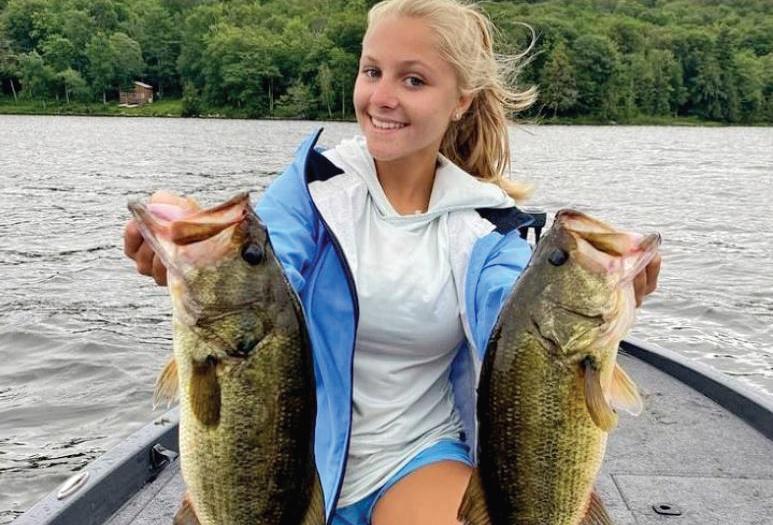
She has her own bass boat, a 20’ Skeeter FXR, with a 250hp Yamaha, but she also shes out of her dad’s boat from time to time, because, “it’s got all the goodies,” she laughed.
Her biggest bass, a whopping 9.1-pounder was caught ipping a black/blue Sweet Beaver along the edges of cattails on Lake Okeechobee when she was only 14 years old. She hopes to break that personal best soon.
Her shing arsenal includes a Favorite Phantom Series shing rod, a Shimano Curado reel and braided or uorocarbon line, along with her favorite bait, a Zoom Speed Worm.

“I was shing out of a kayak and I saw this
far away, so I threw my Speed Worm just past the mark,” she recounted. “I started a fast retrieve when a big bass came up and just exploded on it. at sh drug me around for what seemed like forever before I nally landed it. It weighed just over ve pounds. e cover picture of me holding a bass was taken the day a er.”
Listening to her tell that story, her excitement, enthusiasm and passion for bass shing became even more obvious.
If you haven’t seen one of her videos on YouTube ( eReelHilarySue), I’d strongly recommend you check them out. ey’re fun to watch, and you might just learn something. She’s a natural.
What an incredible future this beautiful, talented young lady has in store. I think she’ll be one of the biggest names in professional bass shing in the years to come.
Don Norton is co-publisher of the Okeechobee edition of e Angler Magazine.
The very best hunting knives possess a perfect balance of form and function. They’re carefully constructed from fine materials, but also have that little something extra to connect the owner with nature.


If you’re on the hunt for a knife that combines impeccable craftsmanship with a sense of wonder, the $79 Huntsman Blade is the trophy you’re looking for.
The blade is full tang, meaning it doesn’t stop at the handle but extends to the length of the grip for the ultimate in strength. The blade is made from 420 surgical steel, famed for its sharpness and its resistance to corrosion.
The handle is made from genuine natural bone, and features decorative wood spacers and a hand-carved motif of two overlapping feathers— a reminder for you to respect and connect with the natural world.
This fusion of substance and style can garner a high price tag out in the marketplace. In fact, we found full tang, stainless steel blades with bone handles in excess of $2,000. Well, that won’t cut it around here. We have mastered the hunt for the best deal, and in turn pass the spoils on to our customers.
But we don’t stop there. While supplies last, we’ll include a pair of $99 8x21 power compact binoculars and a genuine leather sheath FREE when you purchase the Huntsman Blade
Your satisfaction is 100% guaranteed. Feel the knife in your hands, wear it on your hip, inspect the impeccable craftsmanship. If you don’t feel like we cut you a fair deal, send it back within 30 days for a complete refund of the item price.
Limited Reserves. A deal like this won’t last long. We have only 1120 Huntsman Blades for this ad only. Don’t let this beauty slip through your fingers. Call today!
®

$99 value-
Blade
Stauer Clients Are Saying About




Knives
knife is beautiful!”
Crescent,
feel of this knife is unbelievable...this is an incredibly fine instrument.”
Arvada, CO
Southcross Drive W., Ste 155, Dept. HUK864-01 Burnsville, Minnesota 55337 www.stauer.com
is only for customers who use the offer code versus the listed original Stauer.com price.
residents please call 1-800-333-2045 regarding Proposition 65 regulations before purchasing this product.
Afford the Extraordinary
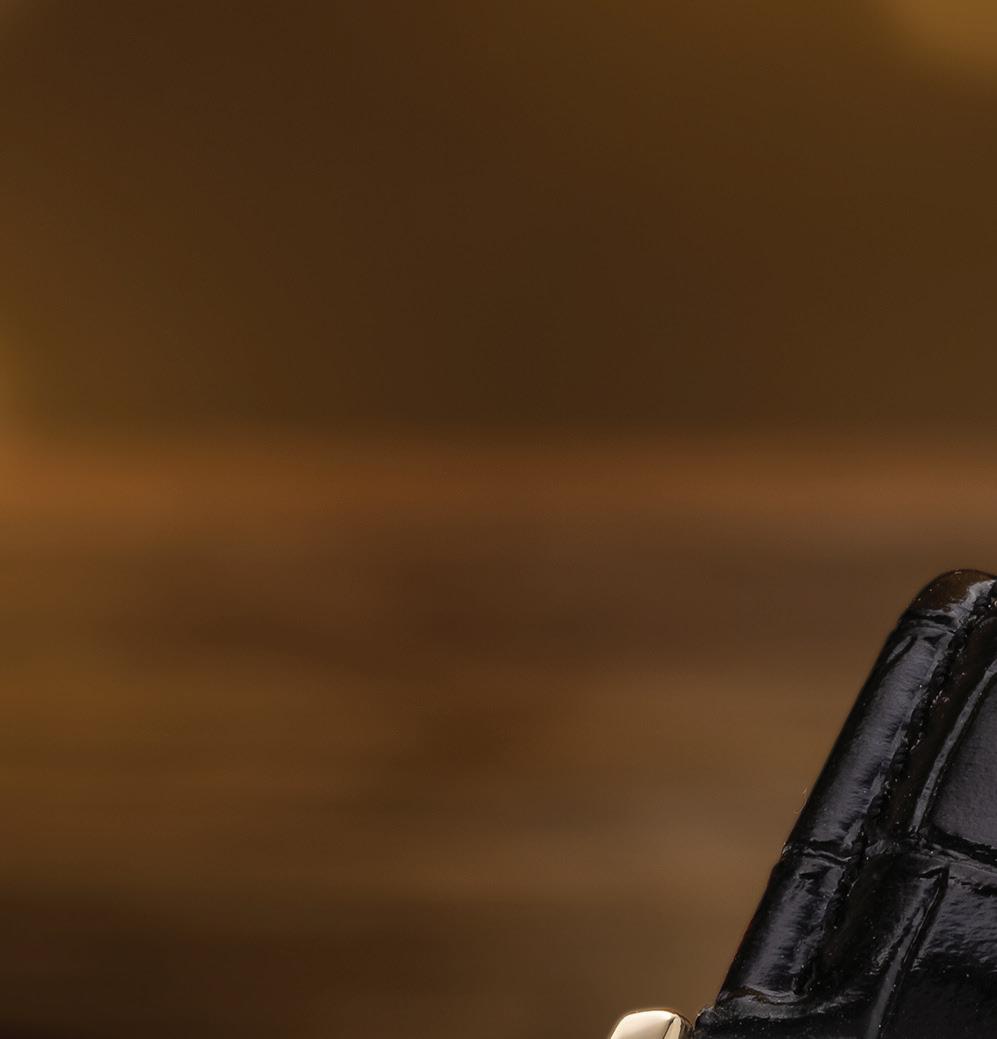


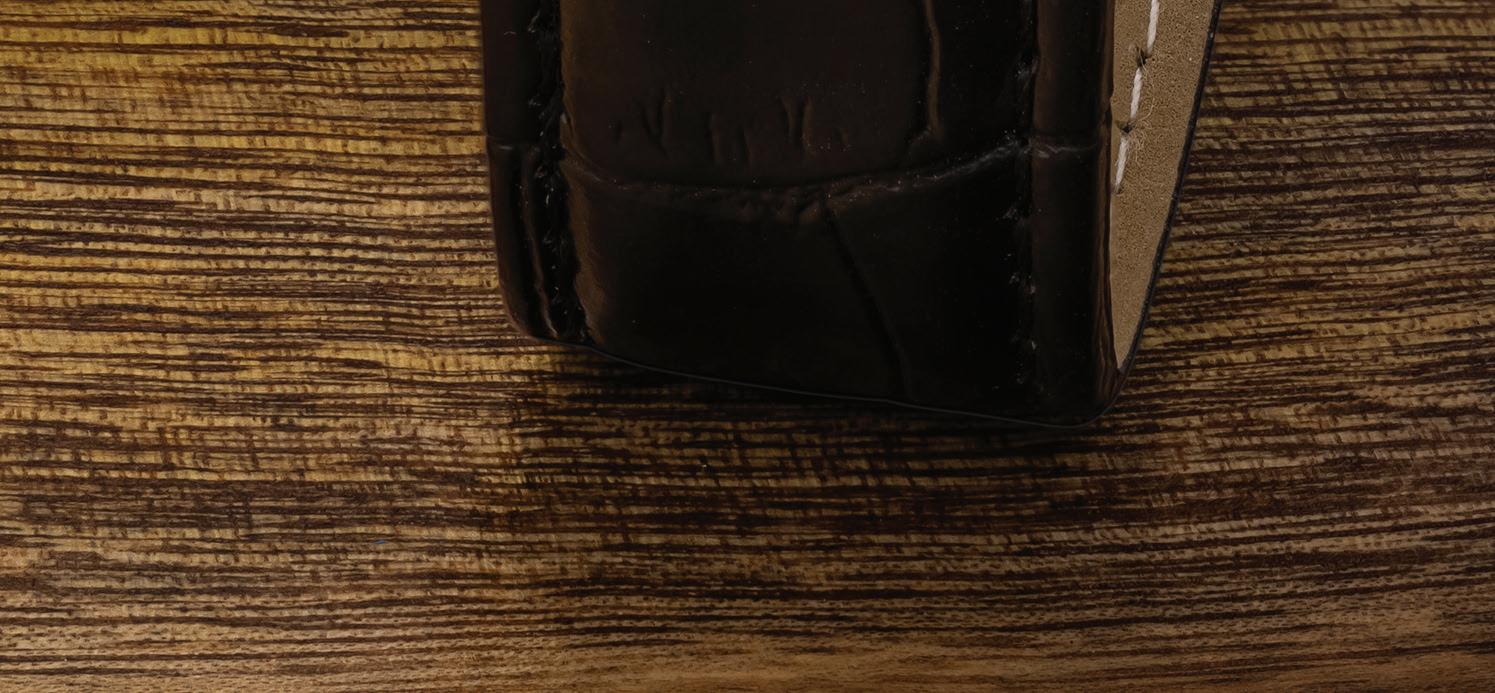




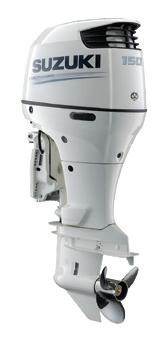
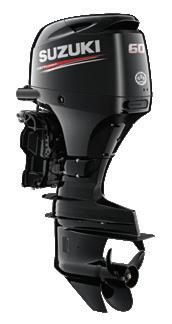











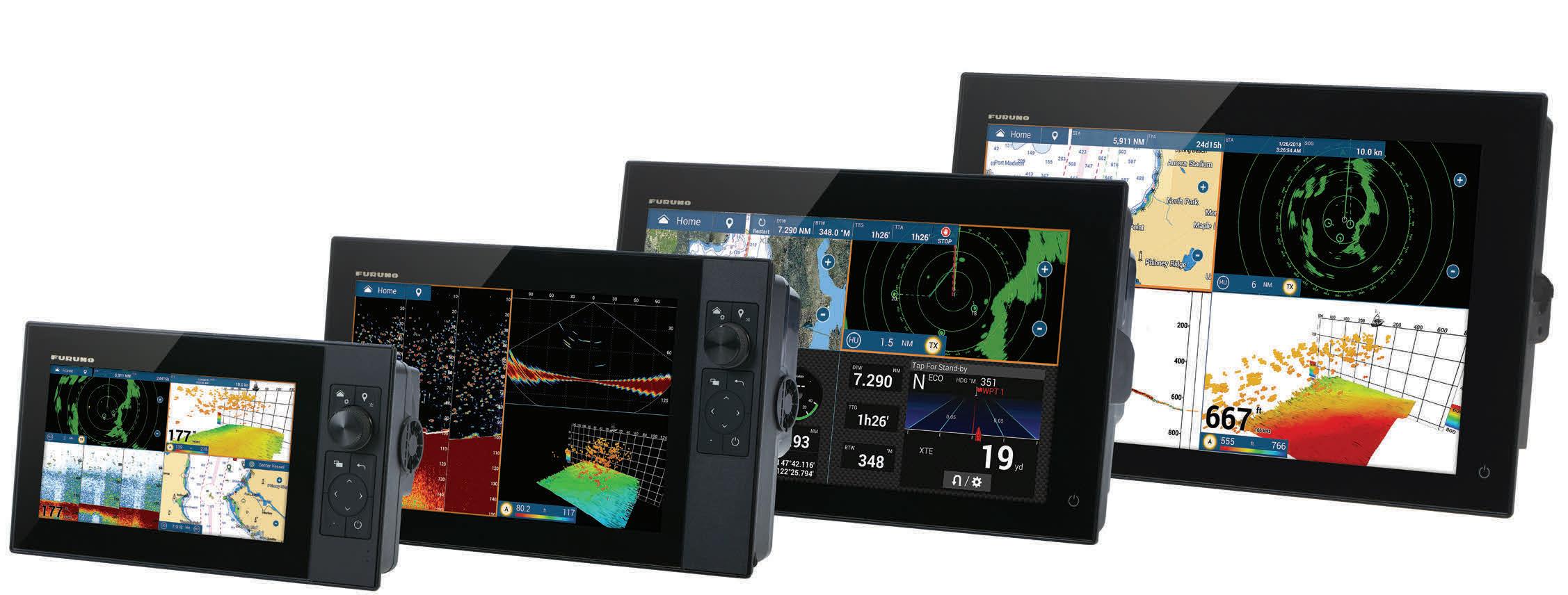
 PHOTO COURTESY OF LARRY MCGUIRE/SHOW ME THE FISH CHARTERS
PHOTO COURTESY OF LARRY MCGUIRE/SHOW ME THE FISH CHARTERS




shing the Gulf of Mexico out of Florida have two weekends remaining in November to harvest red snapper. is special fall season announced by the Florida Fish and Wildlife Conservation Commission (FWC) opened a total of ve weekends for snapper harvest in October and November. e remaining dates are Nov. 11-13 and Nov. 25-27.
e fall red snapper season is open for recreational anglers and for-hire operations in the Gulf of Mexico. During this season, private recreational anglers may harvest red snapper in Gulf state and federal waters. However, state for-hire operations are limited to shing for red snapper in Gulf state waters only. Gulf state waters extend to 9 miles o shore, where federal waters begin.
e bag limit during the fall season is the same as the regular summerseason bag limit. Anglers may keep two red snapper per person, within the 10-per-person daily aggregate snapper bag limit. e minimum size limit is 16 inches tail length. Charter captains and guides may not keep a limit on top of those retained by their anglers. A descending device or venting tool is required to be rigged and ready for use while shing for reef sh in Gulf federal waters. FWC will continue to monitor harvest relative to Florida’s available quota.

ese additional days were made possible by the State Reef Fish Survey, which was developed to provide better data for management of red snapper and other reef sh. It has allowed FWC the unprecedented opportunity to manage Gulf red snapper in state and federal waters.

All anglers shing from private recreational vessels are required to sign up as a State Reef Fish Angler if they target red snapper or other reef sh in state and federal waters, even if they are exempt from shing license requirements. Sign up for no cost at GoOutdoorsFlorida.com or by visiting any location where you can purchase a Florida shing license.
State Reef Fish Anglers may receive a questionnaire in the mail regarding their reef sh trips as part of Florida’s State Reef Fish Survey. If you receive a survey, please respond whether you shed this season or not or whether you’ve submitted data via other methods.


For more information, see the Florida red snapper regulations at MyFWC.com.





















Mastry Suzuki RePower,










and






most any
you purchase a new Suzuki outboard from an authorized Mastry RePower Center you qualify to become a member of the Mastry Suzuki Owner’s Edge. Owners receive an identification card that provides them with important information about their Suzuki outboard motor as well as a passport to additional benefits during ownership. Members enjoy a detailed engine maintenance schedule, Mastry Suzuki RePower Trade Program and special pricing from Mastry Suzuki Partners.














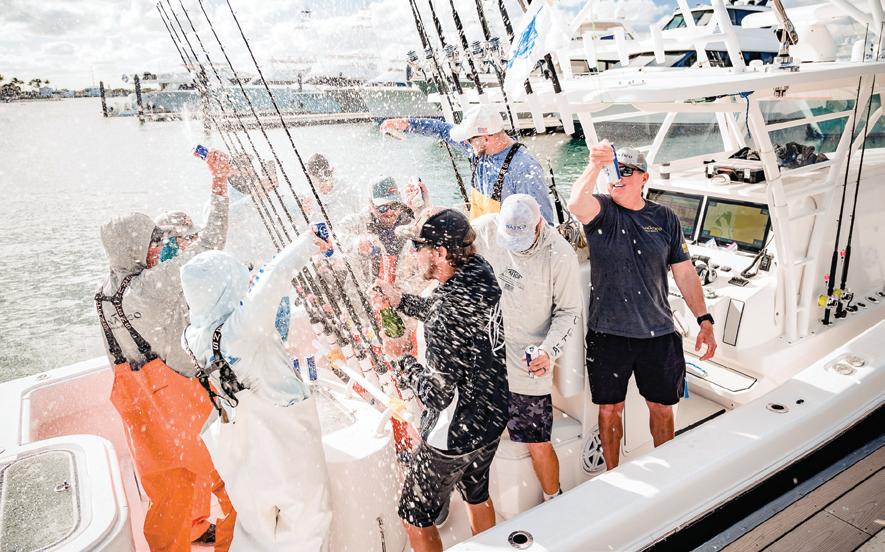
Brought to you by Seminole Hard Rock Hotel & Casino in Hollywood, Fla., the 12th Annual Jimmy Johnson’s “Quest for the Ring” Championship Fishing Week will take over South Florida March 7-11, 2023, additionally hosted by Visit Lauderdale, with tournament headquarters based at Seminole Hard Rock in Broward.
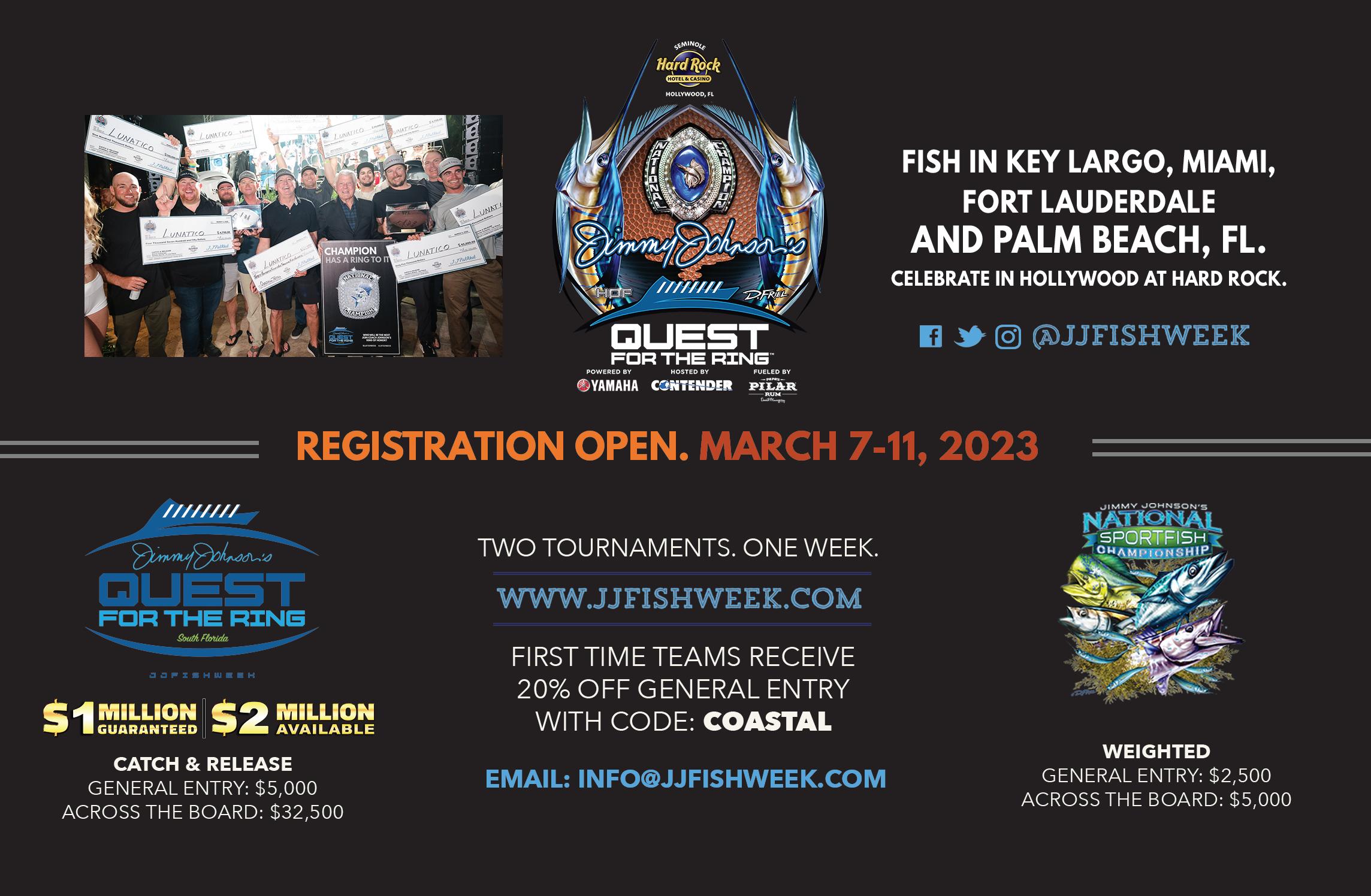
e annual four-day tournament includes the 2-day Quest for the Ring Catch & Release Championship and the National Sport sh Championship Weighted Tournament, which takes place as a separate tournament during the event week. Hosted by Contender Boats, powered by Yamaha and fueled by Papa’s Pilar Rum, the 2-Day Catch & Release Championship features the World’s RICHEST guaranteed purse of $1 million, in partnership with Seminole Hard Rock Hotel & Casino in Hollywood, Fla, making it the longest-running guaranteed purse in history.
Jimmy Johnson’s “Quest for the Ring” Championship Fishing Week is “all about the ring!” according to Coach Johnson. Each year teams vie for their champion rings and entrance into the highly coveted Ring of Honor, an elite group of champions who have taken home the top prize at this exciting competition in the Catch & Release Championship. Each year, overall champions receive Jimmy’s famed National Championship Ring. Renowned for the best parties, which are
Palm Beach’s TEAM LUNATICO won the 2022 Championship, taking home $321,500 and entrance into Coach’s coveted RING OF HONOR on a 42’ Invincible owned by Lance Converse.

back at Hard Rock, the highest guaranteed purse and the ultimate week of shing, tournament highlights include celebrity charity days and highly competitive tournament showdowns. Registration will end with the captain’s meeting on Tuesday, March 7, if spots are still available.
“ e best wasn’t the Super Bowl, the best was not University of Miami, the best is right now!” said Coach Johnson. “ ese teams are part of THE BEST. We continue to grow each year, and I am thrilled to have our partners at Seminole Hard Rock Hotel & Casino Hollywood join us as we
showcase the thrilling challenge of sport shing and to move our hosting of our event to such a beautiful destination in Broward County. We look forward to seeing everyone in March!”
Contender Boats is the o cial center console boat sponsor and a presenting sponsor of the tournament along with the o cial outboard sponsor, Yamaha, and o cial spirits partner, Papa’s Pilar. Additional Hosting sponsors include Oakley Prizm, Michelob Ultra, GED Lawyers, Visit Lauderdale, Garmin, Celebrity Cruises, Hines Securities, Titos Vodka, Atlantic Radio Telephone, and Cadillac. Miami Retail Partner is Crook and Crook and Broward Retail Partner is Big Dog Tackle. e o cial tournament artist and apparel provider is Connected by Water. Additional event sponsors can be found on the event website. e tournament is produced by Fish Hard Events.
Boat Entry information and the full schedule of events can be found at www.jj shweek.com. Registration starts at $5,000 for the Quest for the Ring Bill sh Tournament and $2,500 for the Sport sh Weighted Championship. Register on the tournament website or by contact the tournament o ce at info@jj shweek.com or (305) 255-3500 for more information.
Follow @JJFishWeek on Facebook, Instagram, and Twitter for up to date tournament information.


 By Rex Hannon
By Rex Hannon
There’s an eruption during your retrieve that’s immediately followed by one of the most vicious strikes you’ve ever encountered. e unknown assailant pulls drag, digging deeper only to reverse course and perform one of the most acrobatic aerial shows you’ve ever witnessed. Your rst thought is a monster largemouth, but that idea vanishes when you see the color scheme and the large bump on the sh’s forehead. A er a trying and equipment-testing battle, before you lies an unmistakable dream about or watch on television shows recorded in exotic locations. It’s a butter y peacock bass.
Peacock bass are native to South America, where they are most commonly found in the Amazon and Orinoco river basins. Because of their appearance and name, there’s a common misconception that they are members of the bass family. Actually, they are cichlids.
Peacock bass were introduced to South Florida by the Florida Fish and Wildlife Conservation Commission (FWC) in 1984. ey are nonnative, but they are considered noninvasive. ree stocks of sh were imported from Brazil, Guyana and Peru. A er spawning at the FWC Non Native Research Lab and being tested for disease and parasites by both the U.S. Fish and Wildlife Service and Auburn University, they were released to combat exotic invasive snakeheads, clown knife sh and oscars.
Peacock Bass have a body similar to largemouth bass, but the color scheme is noticeably di younger examples are generally golden/green with three black bars that fade as the sh matures. is also usually a prominent black spot with a yellow/ gold halo on the tail. Peacock bass are fast growing, pushing an inch a month from one year to 18 months. A 19-inch sh can weigh 5 pounds. While the Florida state record butter
undocumented catches of 12 pounds and e IGFA all-tackle world record is 12.6 pounds and was caught in Venezuela. y peacock bass are intolerant of cold water and high salinity. ere have been reports of sh north of Palm Beach County, but they cannot survive temperatures below 60 degrees or salinity above 18 parts per million. is species is commonly found in canals, lakes and ponds, and prefers to feed and spawn in shallow water with vegetation.
Live bait is the easiest way to catch these amazing sh, and they will also strike arti cial lures and ies. Butter y peacock bass prefer feeding during daylight hours, when they use their great speed to pursue
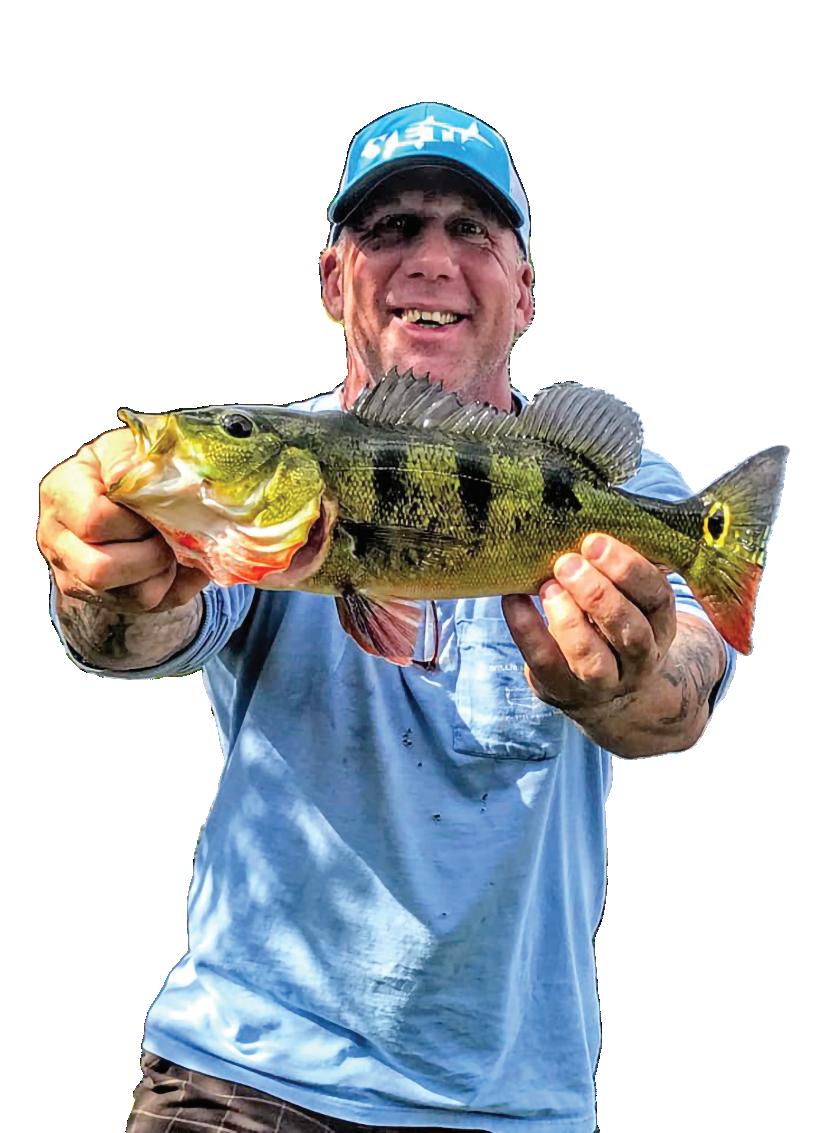
y peacock bass are edible, but the FWC recommends catch and release due to the valuable service they provide in keeping invasive species in e pursuit of this species is also an economic boon to the state. It is estimated that anglers spend more than $8 million a year chasing peacock bass in y peacock bass are another example of shing opportunities.
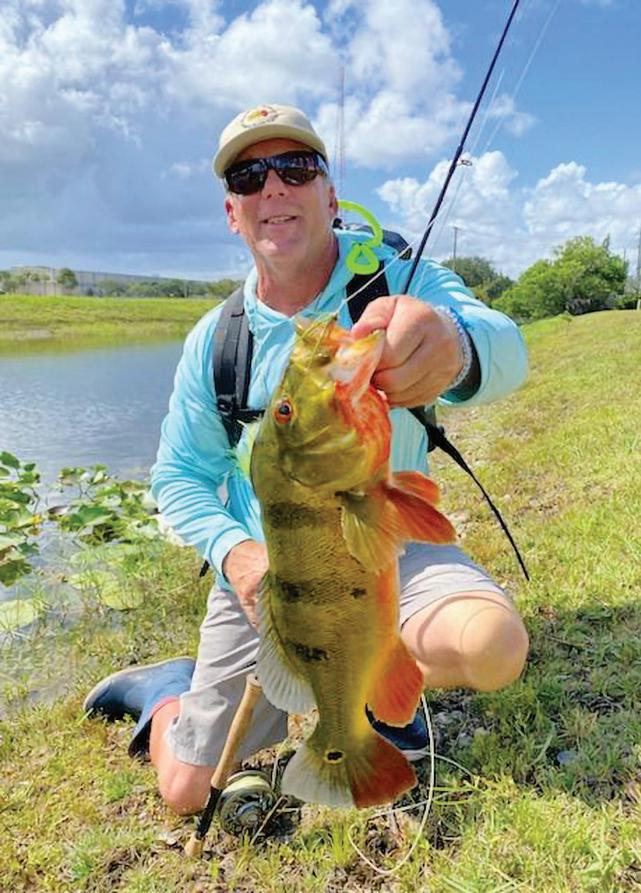



Guy Harvey has dedicated his life to creating beautiful art and apparel to protect the sport and the oceans he loves. From using recycled materials in his apparel to ensuring a portion of his proceeds help protect the ocean through the Guy Harvey Ocean Foundation (GHOF), wearing Guy Harvey means you’re part of the movement to protect our sport and our oceans. Shop now and turn the tides at GuyHarvey.com



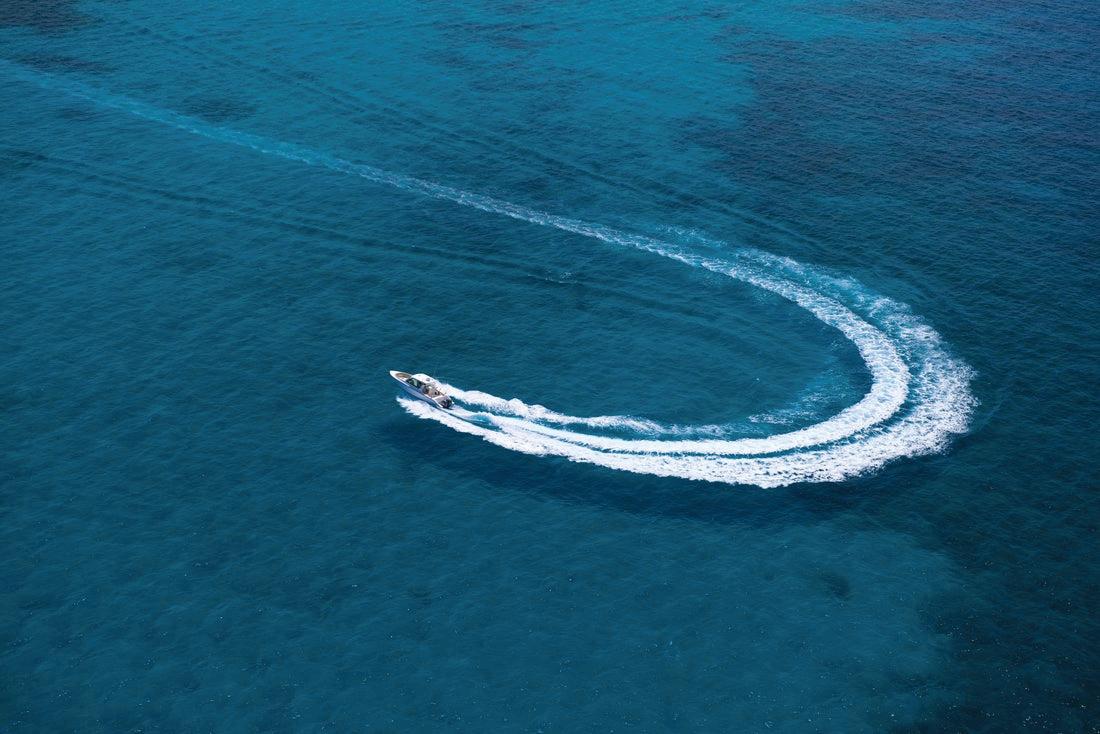















In this series on long-distance lures, we’ve covered just about everything about the cast and equipment. Now that you’ve made that super-long cast—beating other anglers’ distance by 50 feet, or maybe 50 yards—you are presenting your lure to sh that others can’t reach.
What’s next the next step? is is where we enter the heart of the action, where things get fun and exciting. First thing rst, start working your lure.
e long distance between your rod tip and the lure means more line is on the water. You will have less control of the lure’s action, and the delay between when the sh strikes and when you feel it will be longer. e hook set is also a ected. Waves, wind and current all amplify this lag.
e type of lure will determine how you should alter your retrieve to achieve the proper action. Darters, heavy spoons, billed minnows, bottleneck swimplugs and jointed swimbaits are all designed to provide their own action, and they will start swimming when you begin your retrieve.
Lures that require more angler interaction
will require you to adapt your retrieve to compensate for the extra distance and diminished control. A popper

hand what I am trying to impart. You’ll need practice to adjust the way you work a lure at distance, and by paying attention to the way di erent lures react, you will learn to sh them more e ectively.
might require harder pulls to pop. A stick bait or pencil might need a slower cadence and sharper rod twitches to achieve the desired action.
ese details might seem insigni cant as you read this, but go give it a try on the water, preferably in calm conditions. At the end of a super-long cast, you’ll experience rst-



Now, with the current ripping and wave action pulling the line and lure side to side, there’s no way to avoid losing some control over the quality of a lure’s action. e good thing is, sh in such conditions are usually less picky and more aggressive. Still, the better the action you provide to your lure, the better your results will be. en suddenly, the bite happens! A long belly of line in uenced by current and waves increases the delay between your hook set and the moment it translates to the lure. Also, some energy will be lost. Use a wide, sweeping rod movement to set the hook when the lure is far away. is generates a long pull that provides the most energy possible to drive the hook into a sh’s mouth. Also, sh a tight drag when you’re casting for distance. I’ve seen many anglers miss sh when the drag gives line on the hook set. Be ready to adjust the drag lighter based on the power of the sh once you have it hooked.
Legendary angler Patrick Sebile is a world record holder and an award-winning designer of innovative lures and shing gear. Check out his creations at abandofanglers.com.




water temperatures have the snook bite going strong. They should become even more active, as they get acclimated to the lower water temps. Having maintained decent snook action most of the Summer and early Fall, November should continue with plenty of action.

Redfish were active last month and should continue to be into November. Good red fishing should continue with catches around oyster bars, mangroves and broken bottom grass flats. We’re using mostly cut pinfish and cut ladyfish.
The trout bite continues to get stronger right into and through the Winter months, so be prepared for some decent Winter trout action. Always try to fish strong incoming and outgoing tides using artificial lures, live greenbacks and shrimp. Freeline your baits with a small split shot or a popping cork. Use a split shot to keep it away from the birds.
Mackerel, bluefish and ladyfish should still be hanging around feeding on bait schools. Live greenbacks or a silver spoon will work well and, if you’re really looking for some exciting action, try a topwater. Don’t turn your nose up about ladyfish; they can be loads of fun. The one thing to remember is to always use a de-hooker at the side of the boat. If you bring the fish into the boat, they have a tendency to defecate everywhere, including on you.
Mangrove snapper are found on every rock pile or structure around Tampa Bay and are fairly easy to catch, but you’ve got to be quick. A small knocker or Carolina rig with a #1 or 1/0 hook should produce a nice meal. They’re really partial to small greenbacks and shrimp.
Pompano are showing up around the bridges. I’m seeing some nice catch
es coming to the dock. Bridge pilings are a great place for pompano, because the barnacles have grown up over the years and now attract small crabs, shrimp and other sources of food.
Other places to fish are around the mouths of passes, mainly those with a drop off near the mouth. These are ideal spots to fish an incoming tide, as pompano will be in the deeper water waiting for the tide to flush sand fleas and crabs over the drop.

Cobia are often found around range markers, channel markers and bridges during November. Toss a pinfish, greenback or artificial eel, wait for the rod to bend, then hold on and crank.









Thefirst big cold front of the season has finally ushered in the Fall season and lower water temps. This has the fishing on fire. The in shore and near shore bite is in full swing. Reds, snook, trout, flounder, snapper and sheepshead are best bets inshore and snapper, grouper, mack erel and kingfish near shore and on the reefs in the Bay. It’s possible to have a shot at all of the species on one full day trip.
The low tides in the mornings are a perfect time to target the inshore bite, as the fish will be stacked up in the deeper potholes and channels surrounding the flats. Whitebait is still around and works like magic. A freelined live shrimp is a go-to bait for many. Cut bait like threadfins, pinfish and ladyfish will catch all of the inshore species except for the sheepshead. If you’re targeting sheepshead and snapper around the docks, rockpiles or bridges, live shrimp is a safe bet. Cut shrimp has its days, so always have a few dozen fresh dead on board. For the lure fisherman, it’s the peak time of year. Topwaters, jigs, spoons and subsurface will all work.
As the tide comes in and scatters the fish, it’s a good time to check the inshore and near shore rockpiles that are scattered throughout the Bay.

Grey snapper, man groves, sheepshead and gags are stacked up on the structure, the ship ping channel and around most of the towers. Live pinfish and whitebait are best bets, as is cut threadfins and live or frozen shrimp.
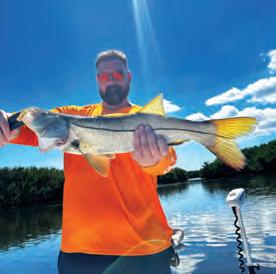
Cobia are a welcome addition to the party and tripletail will also be around the markers and buoys.



The mackerel, both king and Spanish, will be around the bait schools. Look for the birds and the macks will be there. For Spanish, live whitebait and shrimp are a safe bet. Small silver spoons or gotcha lures will provide steady action, too.
If targeting the kingfish, slow trolling a live blue runner, sardine or lady fish on a stinger rig is a proven technique. A spoon or diving plug trolled on a planer is also a tried-and-true method for the hard bait crowd. The areas around the Skyway are top mackerel and kingfish grounds.


— What makes our charter service unique is that we cater to disabled veterans and wheel chair bound clients! Our boat is able to accommodate wheelchairs and is ADA compliant. IF YOU’RE A DISABLED VETER AN, YOUR TRIP IS FREE! This is our way of giving back to our veterans.
Capt. Anthony Corcella, Pocket Change Inshore Fishing Charter - 727-432-6446 www.pocketchangefishingcharters.com | Check us out on Facebook
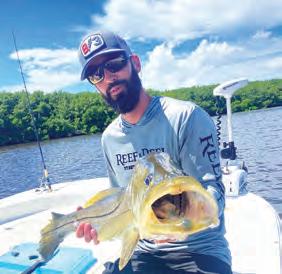





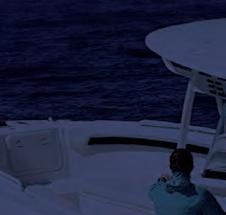



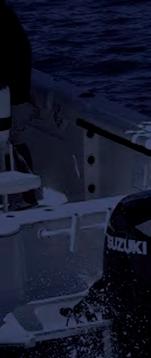







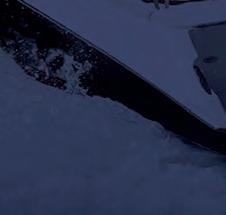





















































November is an outstanding time to fish the Tampa Bay area. The water temps are perfect and so is the weather.




Let’s talk trout fishing. My clients are enjoying some nice trout to take home this time of year and the fish are good size, which makes for good fish ing and good eating. After we get some nice trout in the ice chest, I switch gears and go snook fishing, and that too has been outstanding; we’ve even hooked into a few reds along the way. Last month, the redfish bite was off the charts with many double hook-ups! So, what will November bring as far as the redfish bite? It will not be quite as good as in October, but still enough to keep the rods bent.
Like I stated, Fall is a perfect time to fish Tampa Bay, as the water temps are in the right range for the fish to be active and feed more. They are en tering their staging areas before it gets cooler in late December and January. Cooler temps in the morning make it very comfortable for the boat ride across Tampa Bay to the fishing grounds, and you’re not having to deal with the heat while fishing like we do in August.
Spanish mackerel are around, but not many, and we’re real ly not targeting them as much as the snook, redfish and trout. Pil chards are the bait of choice, but I’ll still keep a few pieces of cut mullet and threadfin in the bait cooler. As you can see, November is a great time to fish Tampa Bay and the surrounding waters. So, if you’ve not been out in a while, dust off your fish ing rods or hire a professional guide and go enjoy some of the great fishing that November has to offer on Tampa Bay.
Captain John Rivers | www.tampabayinshoreguides.com captjohnrivers@gmail.com
727-313-1781


November is the month I pick to get my tackle in shape for the Fall and the start of my favorite month for fishing. Preparing your fishing tackle for the Fall fishing is a must. Update your tackle with different colors on your artificial baits and medium run ning baits. Also, change out to lighter leader material and hook sizes. Hopefully the honey dos are done, and your tackle is ready for fishing. Remember, fishing heats up as the water temperature drops.
November will bring lower water tempera tures and an increase in fish activity. Look for snook cruis ing the mangrove shorelines of creeks and rivers. Live shrimp or fresh cut ladyfish are one of their favorites in the Fall.
Flounder will hit jigs tipped with shrimp bounced on the

Here are a few tips:
• Give your reels a good cleaning by loosening the drags and lubricating the gears. If you don’t feel comfortable doing this, there are several good tackle dealers in Tampa who can service your reels at a reasonable price.
• Check the line guides on your rods for any scratches or nicks. Use cotton swabs, or borrow a pair of panty hose from your wife when she’s not looking and cut it into small strips. It will last a long time so, don’t worry, she won’t miss one panty hose. Now, run the cotton swab or piece of panty hose through the guide. If the panty hose clings or the cotton sticks to the guide, replace the guide or risk losing a fish later. A slight scratch or cut on the guide will cut your line under pressure from a

bottom under docks.
Bigger trout move into the channels and deeper cuts around the mangroves.
Redfish will start their move under docks and around bridges looking for food. Live shrimp are one of the best baits just before the change of the tide.

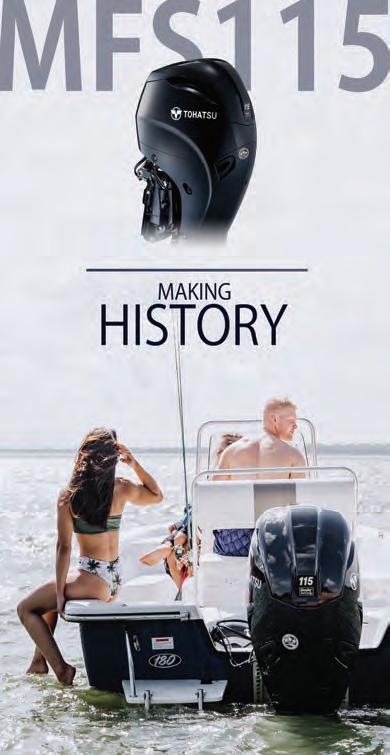





















pulling fish. (Figure A)
• At the end of the day, never put your hook on the guide if your rod doesn’t have a built-in hook holder, as this can and will scratch the guide. Instead, take an electrical nylon tie with a screw hole built in and place it just above the top grip on the rod. This allows a place for the hook to sit (Figure B)
• M ost anglers take too much tackle on a fishing trip. Remember the last time you went on a vacation with your wife, and she brought half the closet along? There are many new small soft sided tackle boxes that can handle all your needs. I suggest you leave most of your tackle at home, and replenish your tackle box as needed. In addition, small medicine bottles work great for hooks and small sinkers to keep on the console of the boat and use as needed. (Figure C)
Sheepshead (bait stealers of Tampa Bay) start their mi gration looking for mates and can be found around rocky bottoms, bridges and docks. This is the start of the season to fish for them until late February when they move back out to the gulf waters. Live shrimp, dead shrimp or fiddler crabs are best baits.
Grouper action gears up, as the bigger gags move closer to shore and make their appearance around the Skyway Bridge and the Ships Channel. Cut bait with a small strip of squid will increase the bite.
Best live baits: Shrimp, mud minnows, small silver dollar size pin fish and fiddler crabs.
Artificial baits: Saltwater assassin (soft bait) - MirrOlure (hard bait).


Good fishing and tight lines.
— Capt. Sergio Atanes is host of Florida West Coast Fishing Report on Facebook and YouTube every Monday night 7-8 p.m. live. He is also host to Aventuras De Pesca USA on national TV and Radio Show. reelfishing.com | Email: atanes@msn.com | Phone: 813-973-7132

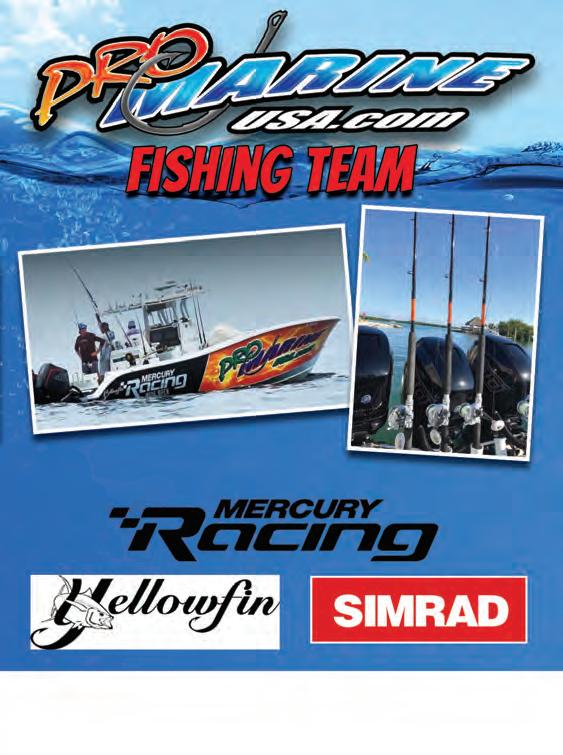


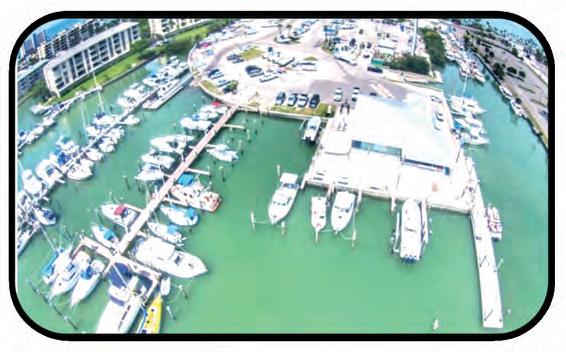
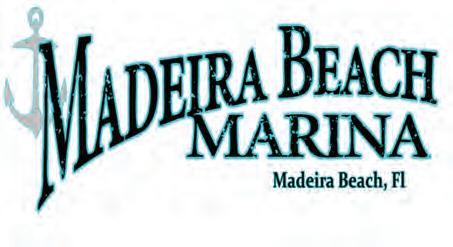




 BY: BRUCE BUTLER
BY: BRUCE BUTLER
Welcome back yak fans. First of all, prayers for those impacted by hurricane Ian and hopes for a speedy recovery. While our Nature coast came through mostly unscathed, south of the Skyway and home to many friends did not. If ever there was a chance to build back better, this is it! Here we are in November already and I’ve got just one thing to say, “the boys are back in town.”
That’s right. The big offshore reds are starting to show up on the incoming tide to feed. This is great news, as it shows that the Winter pattern is starting to kick in. The school I ran into was way out of the slot and a real challenge on light tackle. “Yeah, great” you’re thinking, “where am I going to find these schools?” Okay, you’re right, I’m not publishing the GPS coordinates on my spot, but if you fish any of the outside bays, i.e., Ozello, Fort Island, Bayport, Green Key, etc., and work the tides, you should be able to make things happen.
Look for an area that has outside access. Remember, they are coming from offshore. Check your structure, as they are coming in to feed. Nothing but sand isn’t going to attract much. Watch for movement. This is critical; you should be able to see the wave as they come in on the shallow bays. Don’t try to get too close as they spook easy in shallow wa ter, so stay back. Don’t immediately chase them if they move away, many times a school will come back depending on the type of bay or area you’re in. Work the school from the outside. By that I mean, place your bait to the outside of the school on the open water side. The reason for this is that a cast in front of, or the inside, will possibly spook the school. And, if you get a hook up, the fish will most likely run through the mid dle and spook everybody on the outside. They will usually run for deep water, so hooking a fish from the outside edge will give you another shot at them. Cut bait, shrimp or GULP would be best to use in this situation. Anything flying over their heads seems to affect the schools; so, let it sit and they will find the bait.
The trout bite has been picking up. The Chaz has been doing re ally well on the outgoing tide with topwater plugs. Other areas are finding that suspending/subsurface lures have been the go-to lure of choice. Black drum are coming back in, and the best way to catch them is with a shrimp on the bottom. Stinky frozen shrimp freelined or, pref erably, with a small split shot seems to work best. Set the shot 1 to 3 inches above the hook.
Ya’ll be safe. Till next time, Bruce
— Indian Bay Outfitters is Hernando County’s premier fishing guide with full and half-day charters available. Kayaks, tackle and gear are provided. Just bring your lucky hat and a good attitude, and be ready to see some pristine shoreline and great fishing. | Bruce Butler “The Stumbling Gypsy” (352) 428-5347 Bruce@IndianBayOutfitters.com Web: www.IndianBayOutfitters.com
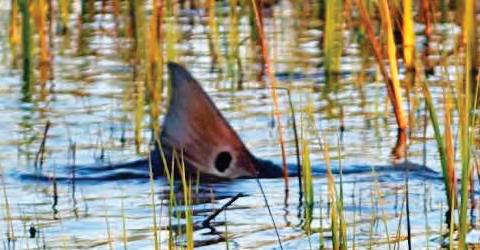





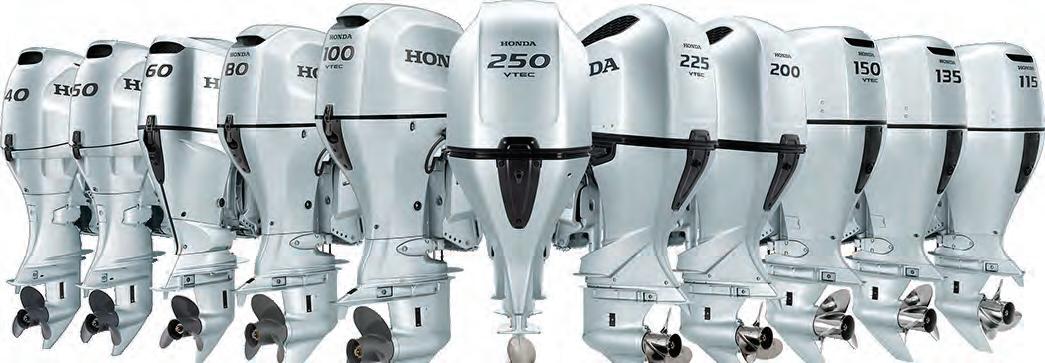


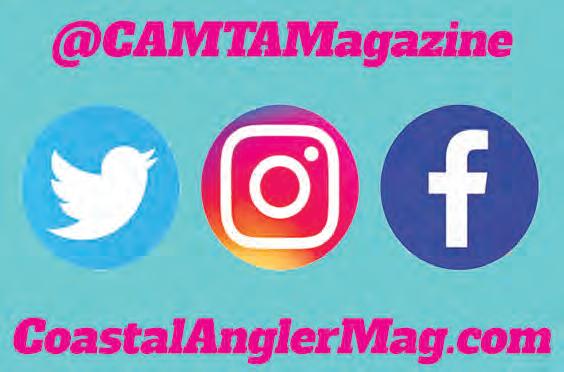



unlike the big box stores setting up for Christmas in October, the time to celebrate the season comes early for the anglers of the Gulf of Mexico in November. Af ternoon thunderstorms have passed, as has the need to run 60+ miles to find cooler water while hundred-dollar bills cycle through our injectors. You can feel the change with the first cool morn ing breeze--a sign of cold fronts coming to drive water temps back into the “magical” 70s. Magical to those who love to chase the elusive torpedoes known as kingfish, and the biggest of the year are sure to light up our Raymarines with the right bait. As a good friend likes to remind me, while Spring kingfish fishing is for everyone, Fall is for the real anglers.
Beyond kings, the Fall brings us near shore gag grouper bite, which is a thing of beauty. Resident gags have been here all year, but the warmer water temps tend to give them lock jaw. The cooler water temps restore their desire to hunt, and we are glad to provide the baits. Thanksgiving is synonymous with relining our heavy conventionals with 80-pound Ande mono and making sure the drag washers are ready for the tightest setting. Our advice this time of year is to take full advantage and enjoy this fishing season. Looks like big changes are in store for all of us starting next year, and it seems that gag grouper may be the biggest fishery affected.
The luxury of running 5-20 miles to catch quality fish is the best present of all. Get your rods ready, and fuel up those vessels to make November the most wonderful time of your year anglers!
This is the season to start breaking out the neoprene, if you’re of the scu
Notba persuasion. For six months, board shorts and bathing suits with a rash guard have been all most of us have needed to enjoy time at depth. Snowbirds may look at us funny for sliding into a 3, 5 or 7 mil wetsuit while they hop in donning what we consider summer attire, but that’s just fine.
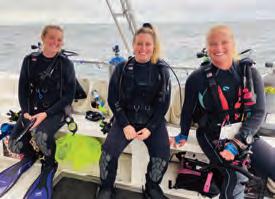
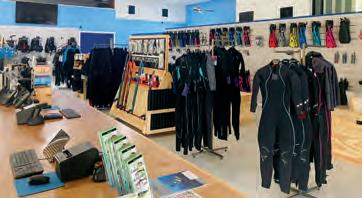
The cooler temps normally give us cleaner, clearer water, which always makes for better diving. For us that love to get our fresh catch of the day with a spear gun, we will dive dive dive. The window, before weather be comes the biggest factor, is shortening; so we must take full advantage of every beautiful day we get. This time of year, we often help our diving community exhaust those built-up sick time hours over these precious few weeks. You never know what you are going to get between Halloween and Christmas; but, one thing is for sure. You must take advantage of every day mother nature gives you to enjoy what you love. Good con ditions are not a given between now and when the ball drops on New Year’s Eve.
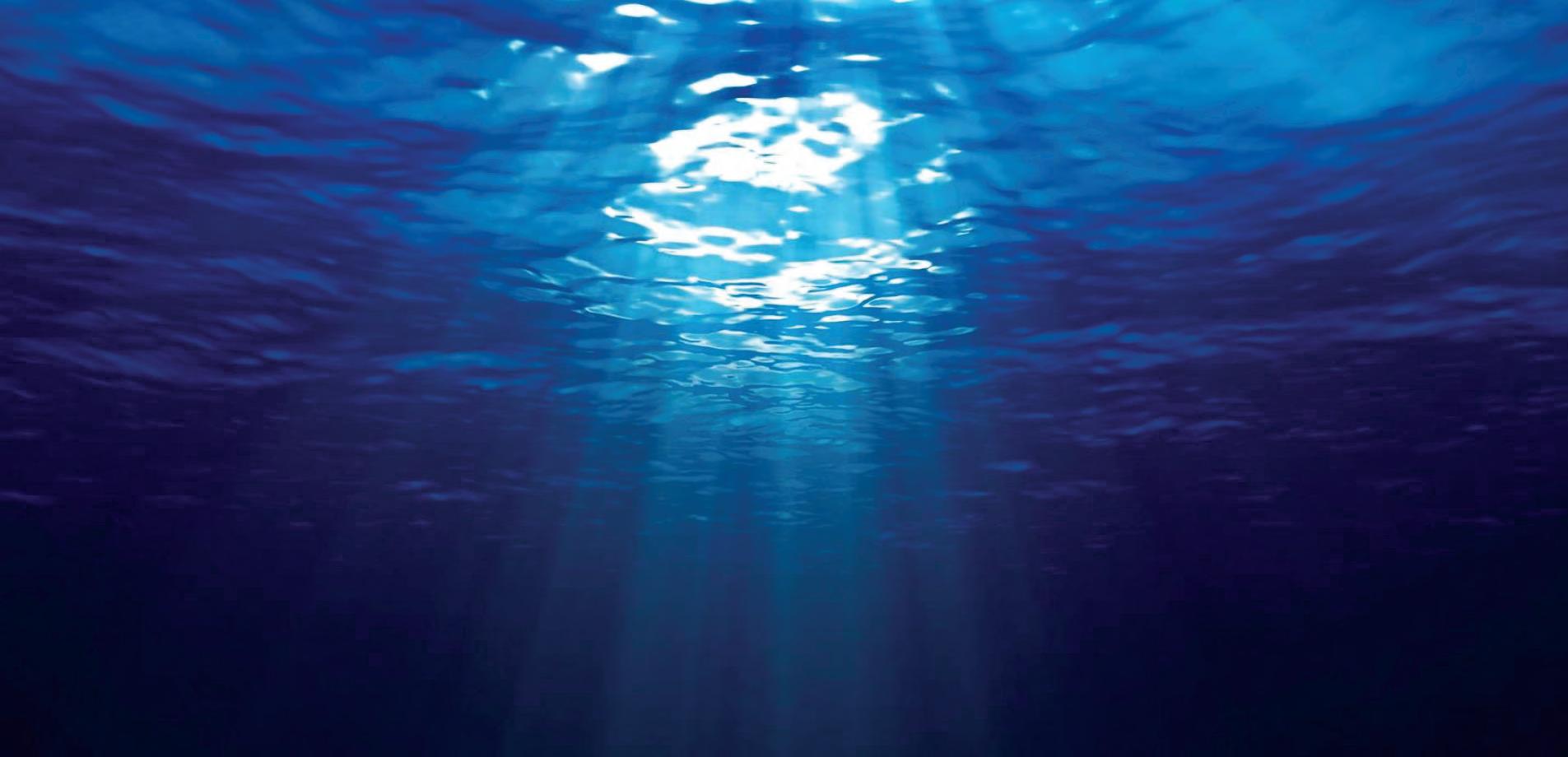
— Capt. TJ Shea. Owner/Operator 2 Shea Fishing and Diving Charters. TJ has been exploring above and below the Gulf of Mexico since he was 8 years old. Contact us at 813-385-2169 and at info@fishanddivetampa.com

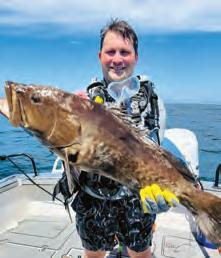


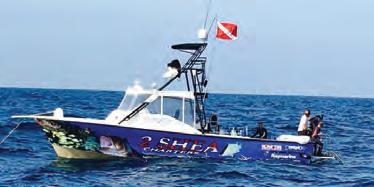
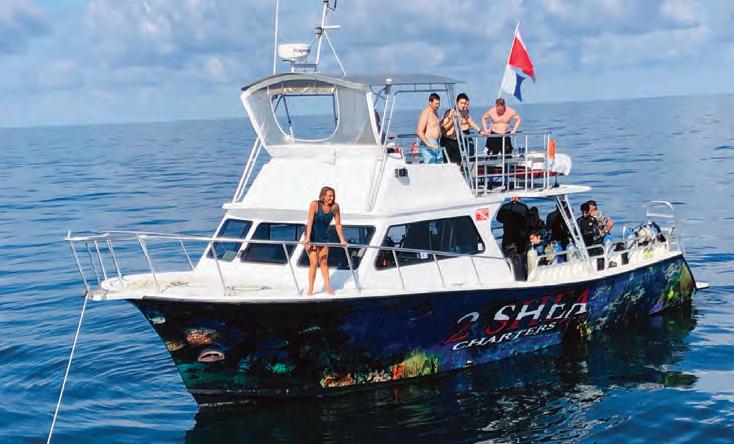






Welcome to Novem ber! Changing weather means changing fishing tactics to be successful. Our inshore aquat ic species have begun collect ing near warmer water sources in order to survive the cooler months of the Winter. Not only the game fish take part in this cycle, but the bait fish also seek shelter in warmer water. In Hernando County, we have some of the shallowest waters along the Nature coast; therefore, our water temperature can drop very quickly. One or two chilly nights can take the water temp down 10 degrees or more. This cycle happens about the same time every year, but it can vary by a few weeks.
From November on, the water temperature will play a huge factor in where these fish can be caught. Redfish are more tolerable to the cooler wa ter and can be seen moving around the islands, as well as, in creeks. Trout are less tolerant to the temperature change and tend to school up in warmer parts of water. Snook are the least tolerable to cool water and tend to be sedentary creatures on the very cold days. Snook are actually warm water tropical fish and wouldn’t survive if it weren’t for the warm water our springs provide, which creates refuge for this species.

November has some of the most beautiful fishing weather all year - not too hot and not yet too cold. This is a great time of year to throw artificial baits and lures. Trout love a soft plastic and will hit a wide variety of colors. I,

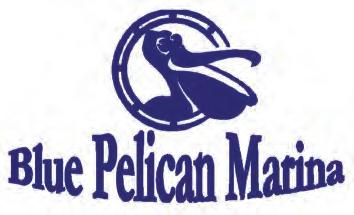
typically, have success with a white col ored bait or the Hot Chicken jerk baits. Depending on water depth, an 1/8 or 1/4 ounce jig head should do the trick.
Snook and redfish will also hit soft plastics, but I really like throwing the 808 colored MirrOdine lure. We also use a lot of shrimp and creek chubs in No vember. Creek chubs can pretty much be found in any creek inlet with a little grass or structure. Take advantage of the cooler weather and practice throwing those cast nets! Snook tend to hit best on a large creek chub--one of their favorites. Trout and redfish cannot resist a nice size shrimp floating by on a popping cork. Remember to give your cork a little tug ev ery once in a while to make that popping noise to attract fish.
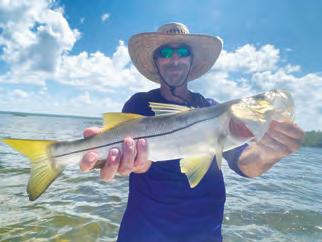
Happy Thanksgiving to all my fellow anglers and families. Stay safe out there and catch some fish!


Tight lines everyone.
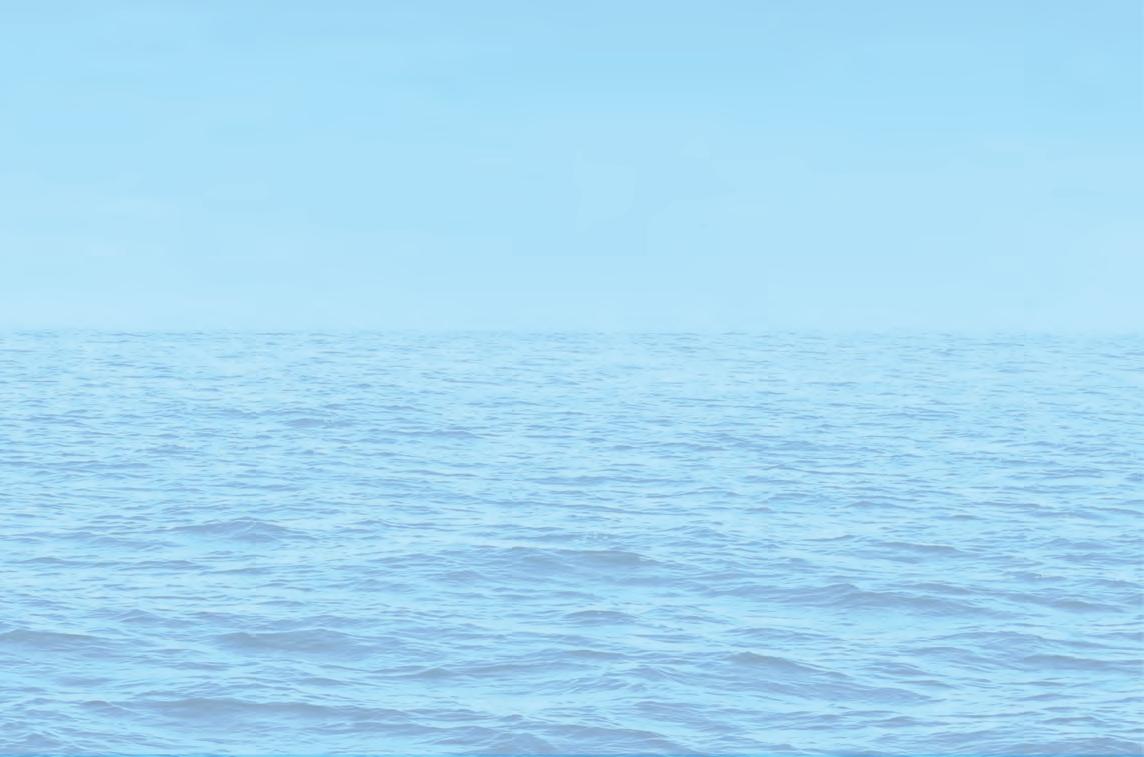
— Captain Gary Reel Shallow Fishn Charters | 352-575-6791 www.reelshallowfishn.com | Facebook @Reel shallow fishn charters


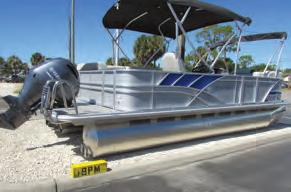





Ingredients:
• 1 cup all-purpose flour
• 1 teaspoon baking powder
• 1 teaspoon salt
• 1 teaspoon ground black pepper to taste
• 1 teaspoon of Old Bay seasoning
• 1 cup milk
• 1 egg
• 1-quart vegetable oil for frying
• 1 1/2 pounds cod fillets or grouper (if in season)

• In a medium-size mixing bowl, mix together flour, baking powder, salt, and pepper. Stir in the milk and egg; stir until the mixture is smooth. Let mixture stand for 20 minutes.
• Dredge the fish in the batter, one piece at a time, and place them in the hot oil.
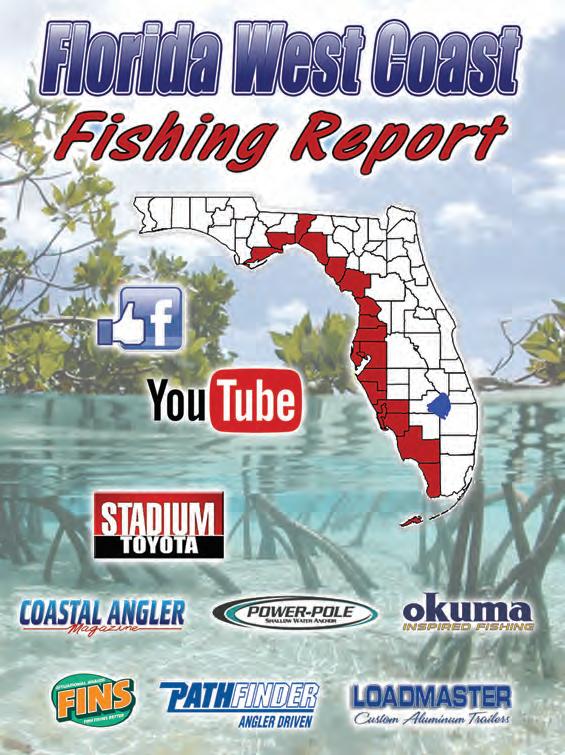

• Fry until the fish is golden brown. If necessary, increase the heat to maintain the 350 degrees F about 4 to 5 minutes. Place on paper towels. I use the fry daddy it’s quick and easy, or a skillet is fine too.
• For the chips I use steak fries that I buy in the bag at my local grocery and follow their directions. Serve with malt vinegar, lemon, or tartar sauce, or all three.
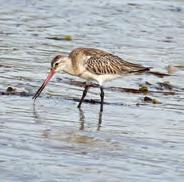


Everyonce in a while, nature throws us a surprise wrinkle from what we think or ex pect. One of those surprises was found on Sunday October 2nd., when local birders discovered a bar-tailed godwit at Fort DeSoto Park! This was very strange for a bird that, in the United States, is typically only seen in Northwestern Alaska. One bar-tailed godwit did visit here in 2013 and another in 2016. There’s some wonder as to if it was the same bird on both occurrences.
The godwits nest in Northern Canada and make an extraordinary 7,000-mile, one-way, migration to their summer grounds in New Zealand. This harsh trip is very dangerous, because the very few places that they do have to stop along the way are seeing an alarmingly fast loss of wetlands.
The godwits primarily probe the wet soil with their long, slightly upward curved bill in search of worms, insects and crustaceans. They will return to Northern Canada in the Summers to breed when the frost melts and the soil thaws. So, the question remains as to why this bird is so far away from its normal summer grounds. Did it get blown off track by a storm? Is this the same bird that was here just a few years back and it knew there was plentiful food here? Is the loss of wetlands in the Western Pacific regions causing the birds to explore other pathways? We may not immediately know, but we can continue to monitor the birds’ movements and study individual birds with bands and tags.
This bird highlights the true fact that you never really know what you may encounter outdoors, unless you get out there and search for yourself. So, I encourage everyone to get a pair of binoculars, a bird or wildlife field guide, perhaps a camera and get out and see what you can discover today!
— Captain Wes Tallyn was raised in Florida and is a fisherman, birder, avid outdoorsman, photographer, and environmental scientist. Wes has a focus on conservation and education in the community and is the owner of Snook Jam Outdoors. You can find him on Instagram @ snookjam or call 727-410-5853.


Let us help you get the perfect machine for your “ME” time.
Designed to work smarter than the competition, the 1 Series Compact Tractors maximize your yard without breaking the bank. From the comfort of your seat, you’ll appreciate big performance and convenient sizes.

e a ordable 1023E is easy to use and provides plenty of muscle for jobs around the yard.
From mowing and loading to tilling and digging, these compact tractors are built to make a long day of chores feel simple. When you turn the key of a John Deere 1 Series, you’ll quickly see why these tractors are the one.


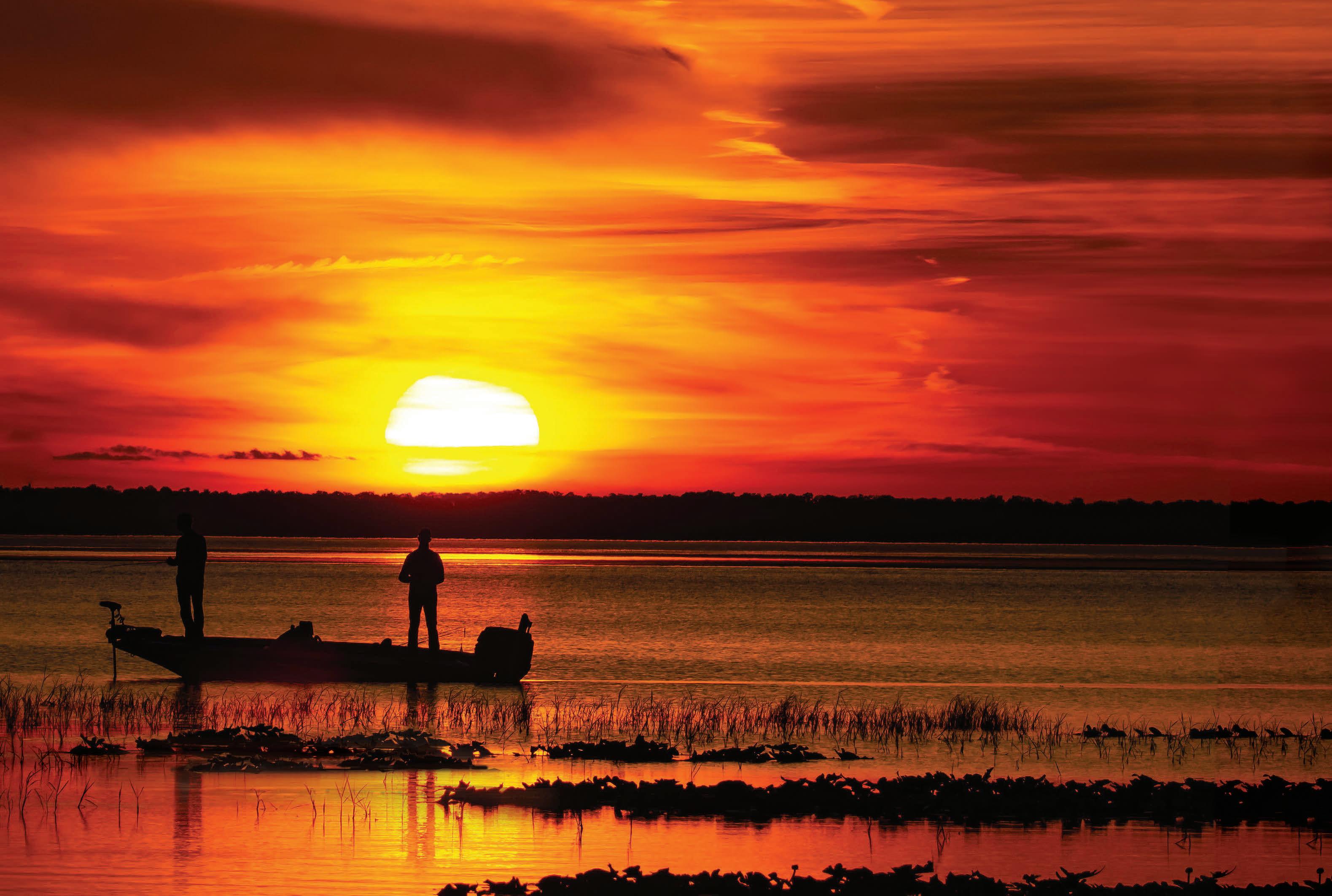



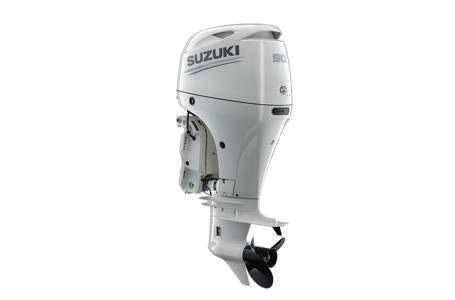
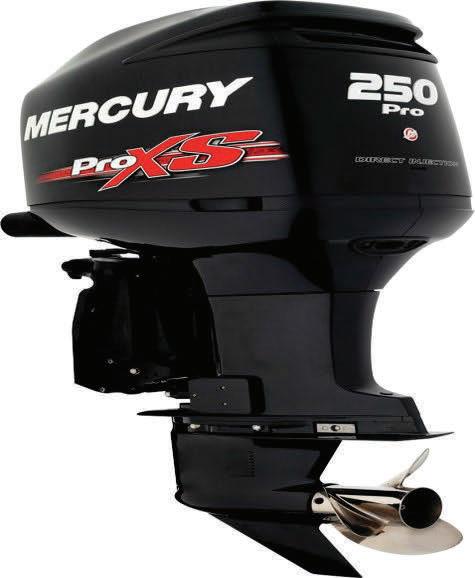
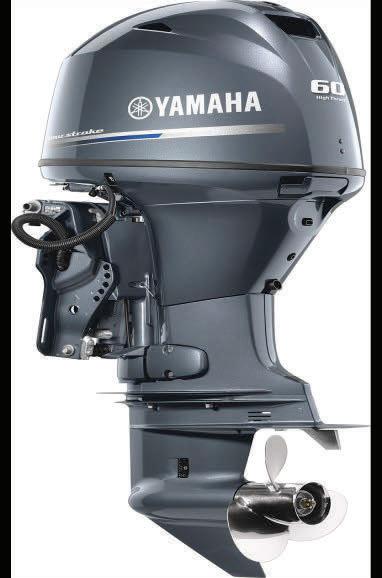

 By Capt. Michael Okruhlik
By Capt. Michael Okruhlik


time… ounder time! e fall migration typically reaches its peak in November along the Gulf Coast and more ounder are sure to reach their spawning grounds in this Gulf this year. Louisiana has joined Texas and Florida with their closed season during the peak of the run. However, the fact that you can’t keep any atties during this time doesn’t mean you can’t catch them.
Flounder will be migrating into the Gulf, so the obvious ambush areas will be around passes that lead to open water. e ounder will position themselves in di erent areas based on the tide level and current strength. In addition to using their burying-in-the-sand ambush technique, they also like to utilize structure in a couple of ways.

First, any object that protrudes above the bottom is a great ambush point. is o ers a current break for forage sh to gather directly above a buried ounder, which makes for an easy meal. Objects such as bulkheads are also great ambush points. Flounder like to position themselves against the solid barrier. I think this can be for two separate reasons depending on what other factors are at play. As mentioned above, it could be a current break, especially if the bulkhead has a corrugated shape. When a ounder settles against a bulkhead, its prey has fewer directions to ee, allowing the ounder greater odds of capturing it. When targeting ounder, never pass up a bulkhead.
Second, ounder can be caught on a variety of lures and live bait if you keep it in contact with the bottom to increase your odds for a strike. On the live-bait options, a frisky mullet will produce larger ounder, so if you want to increase your opportunity of landing a trophy, this is the way to go. I prefer to sh with lures and lean heavily on the paddletail style. Twitching these hard along the bottom sends a pulsating sound and vibration that really grabs their attention. Jerk-style so plastics and bucktails can also be e ective worked in the same manner.
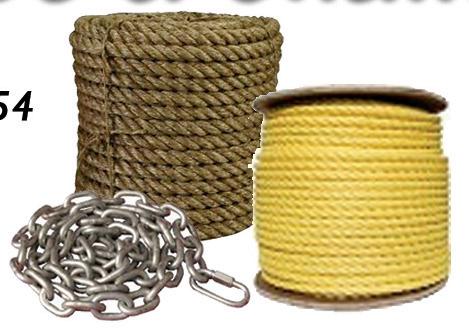
If I had to pick a tide to maximize time on the water, I would choose a medium- ow outgoing. Although there are no set rules that sh always follow, ounder feed more on their way out to the Gulf and utilize the current to ease their journey. During the incoming tide, they bury themselves rather than ght the current.
Don’t let the closed season discourage you from targeting ounder during this migration. It will have its advantages. Going forward, we will undoubtedly have a larger ounder population, but the instant grati cation will be a lot less tra c in our favorite ounder spot! I will use the closed season to target a new personal best this season, and so should you.
Okruhlik is the inventor of Knockin Tail Lures®, Controlled Descent Lures™, and the owner of www.MyCoastOutdoors.com.

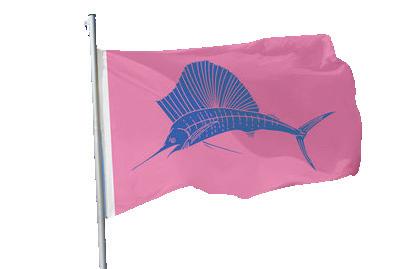
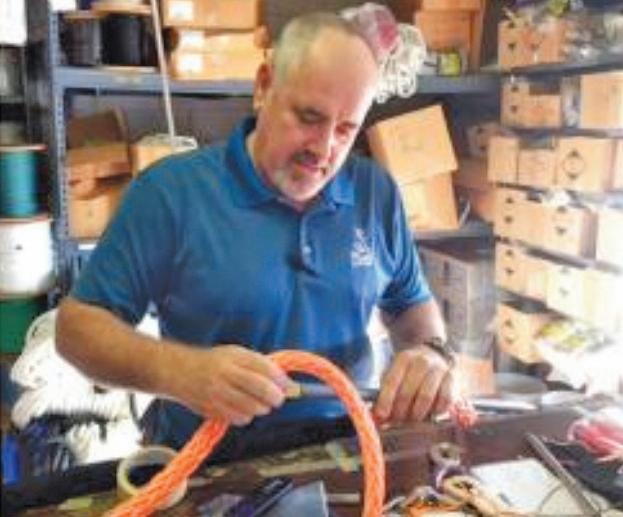


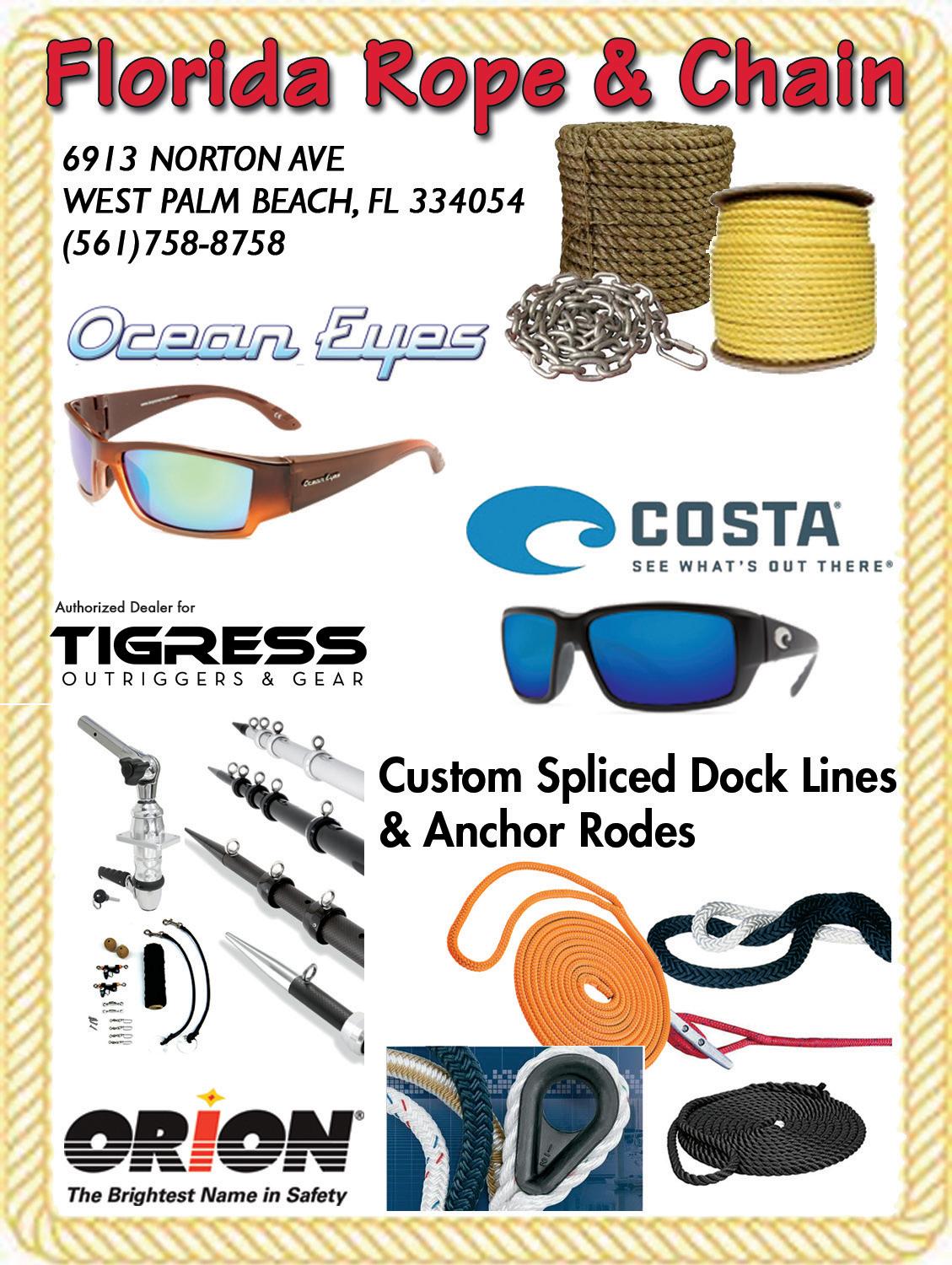

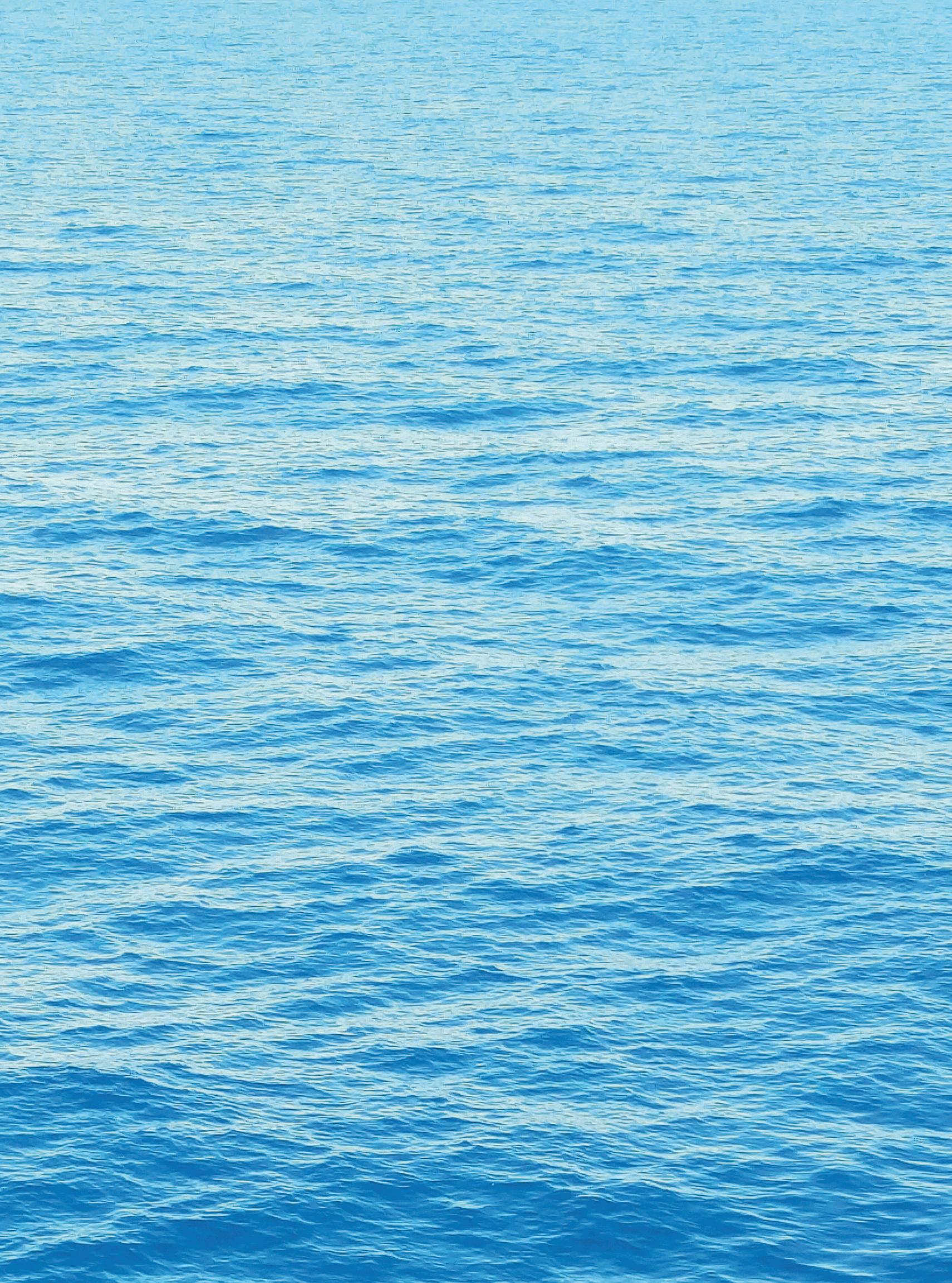
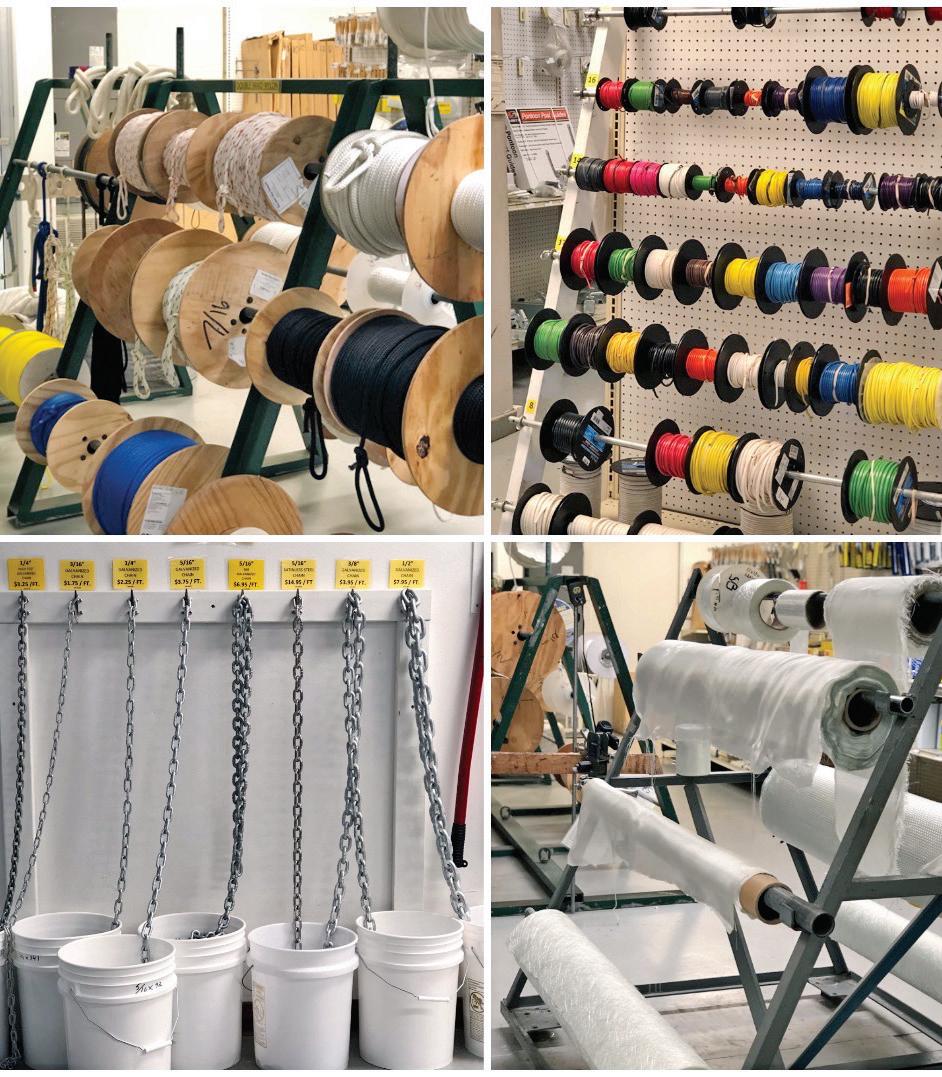
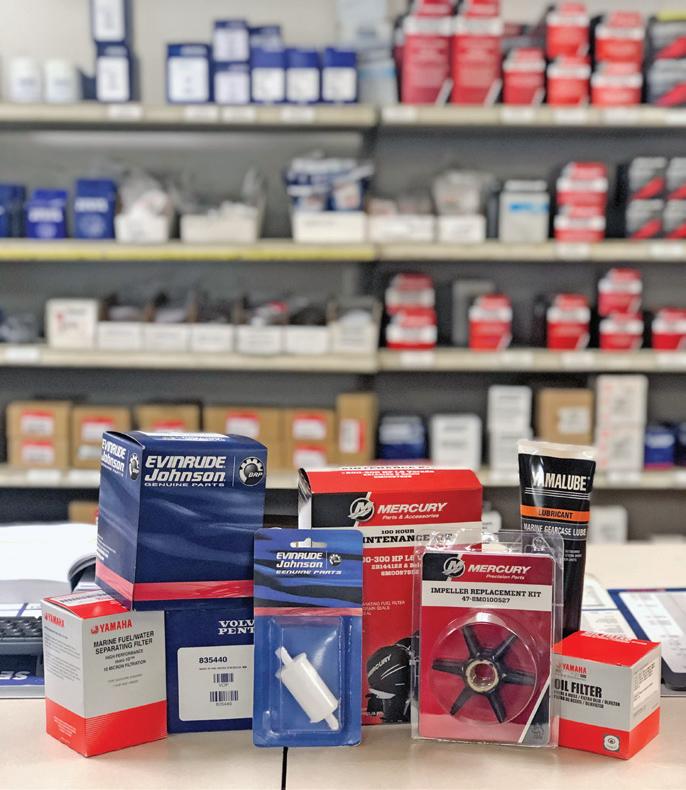













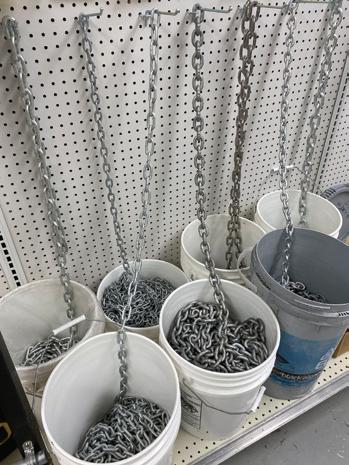

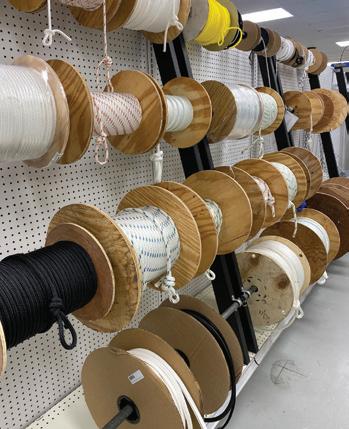

Winter in south Florida brings an awesome collision of ballyhoo and sail sh that makes for some of the best shing of the year. It’s also the time of year for some of the richest and most fun tournaments. If you’re interested, right now is the time to register. Here’s a list of some good events:
Nov. 30 – Dec. 4, 2022 Dust ’Em O Sail sh Warmup
Fort Lauderdale • www.dustemo sail sh.com
December 1-4, 2022 Pirate’s Cove Sail sh Classic
Pirate’s Cove Resort & Marina, Port Salerno www.piratescovesail shclassic.com
Dec. 2-4, 2022 Islamorada Sail sh Tournament
1st Event of the Florida Keys Gold Cup Sail sh Championship Whale Harbor, Islamorada www.islamoradasail shtournament.com
Dec. 7-10, 2022 Stuart Light Tackle Sail sh Tournament Stuart • stuartsail shclub.com
Dec. 16-18, 2022 Islamorada Junior Sail sh Tournament Islamorada • shnbully@msn.com
Jan. 5-7, 2023 86th Annual Silver Sail sh Derby Sail sh Marina, Singer Island westpalmbeach shingclub.org
Jan. 6-7, 2023 Fish for Holly Sail sh Tournament Islamorada • shforholly.com



Jan. 11-15, 2023 Operation Sail sh
Leg One of the Quest for the Crest Sail sh Series Sail sh Resort & Marina, Palm Beach www.bluewatermovements.com
Jan. 17-21 Buccaneer Cup Sail sh Release Tournament
Buccaneer Marina Resort, Riviera Beach buccaneercup.com
Jan. 18, 2023 Cheeca Lodge Presidential Sail sh Tournament
2nd Event of the Florida Keys Gold Cup Sail sh Championship Cheeca Lodge, Islamorada www.islamoradasail shtournament.com
Jan. 21-22, 2023
Islamorada Fishing Club Sail sh Tournament
3rd Event of the Florida Keys Gold Cup Sail sh Championship Whale Harbor, Islamorada www.islamoradasail shtournament.com
February 22-26, 2023 Sail sh Challenge
Leg Two of the Quest for the Crest Sail sh Series
Three checkpoints: Miami, Pompano Beach, West Palm www.bluewatermovements.com
April 12-15, 2023 Final Sail
Leg Three of the Quest for the Crest Sail sh Series Miami Beach • www.bluewatermovements.com



Florida region you’re shing.
By Emily Rose Hanzlikduring the colder months, where they gather together. Due to them being more condensed during the colder months, it makes them easier to catch.
While smaller seatrout school up and are most e ectively caught with live bait, larger individuals are more solitary. Mature individuals and breeding females longer than 20 or even 25 inches might pair up with another large sh, but they are rarely found schooling.
As the colder months arrive in Florida, the spotted seatrout bite will begin to pick up. ese gorgeously speckled sh are a nearly year-round target for anglers in Florida, and their meat is so and aky with a mild avor.

Seatrout typically lurk in shallow murky waters of estuaries. Usually, these areas consist of seagrass and oyster beds that are hot spots for juvenile prey. While being able to hunt on smaller prey like shrimp, crabs, and bait sh, trout also are able to escape larger predators like sharks, big snook and jacks. Most trout move into deeper bay waters
Seatrout in Florida are having a hard time. eir numbers have dwindled on the east and west coasts because of red tides, the disappearance of sea grass and other factors. ey were once a great option for lling coolers for a sh fry, but limits have been tightened to protect overall populations as well as breeding-sized females. ere is a slot limit in Florida, which allows anglers to keep only sh measuring 15 to 19 inches. ere is an allowance for one sh longer than 19 inches per vessel, per day—or one sh longer than 19 inches per person, if shing from shore. e bag limit ranges from two per person to ve per person, depending on which


ere are many ways to catch trout. e most e ective way to catch numbers is to nd a school and sh live shrimp under a cork cork. Live bait such as pilchards, mojarras, pin sh and nger mullet used with a oat also work well. If you’re an arti cial-lure person, you can have a blast casting topwater plugs. Using this method allows you to cover a lot more area in search of larger sh.
If you’re targeting huge gator trout, use live baits in the 6- to 10-inch range. Gator trout have a ferocious appetite and would much rather grab one large meal than chase around a bunch of small ones. Silver mullet, as well as pin sh, snappers and grunts in that size range work best. You’ll want to target structure, as larger trout are ambush predators. Spoil islands, docks, oyster bars and rock jetties are prime places to nd a gator trout like the IGFA all-tackle world record, which weighed 17 pounds, 7 ounces and was caught out of Ft. Pierce, Fla.
Emily Rose Hanzlik holds 56 IGFA world records in various categories. She hails from West Palm Beach, where she has a part time Bow n Guide Service as well as shing classes for Jr. Anglers. Find her on Social Media @emilyhanzlikoutdoors.


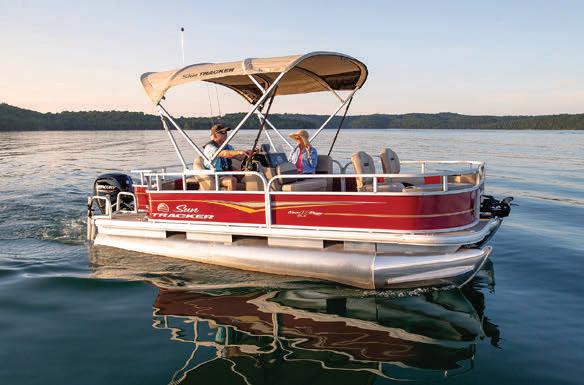















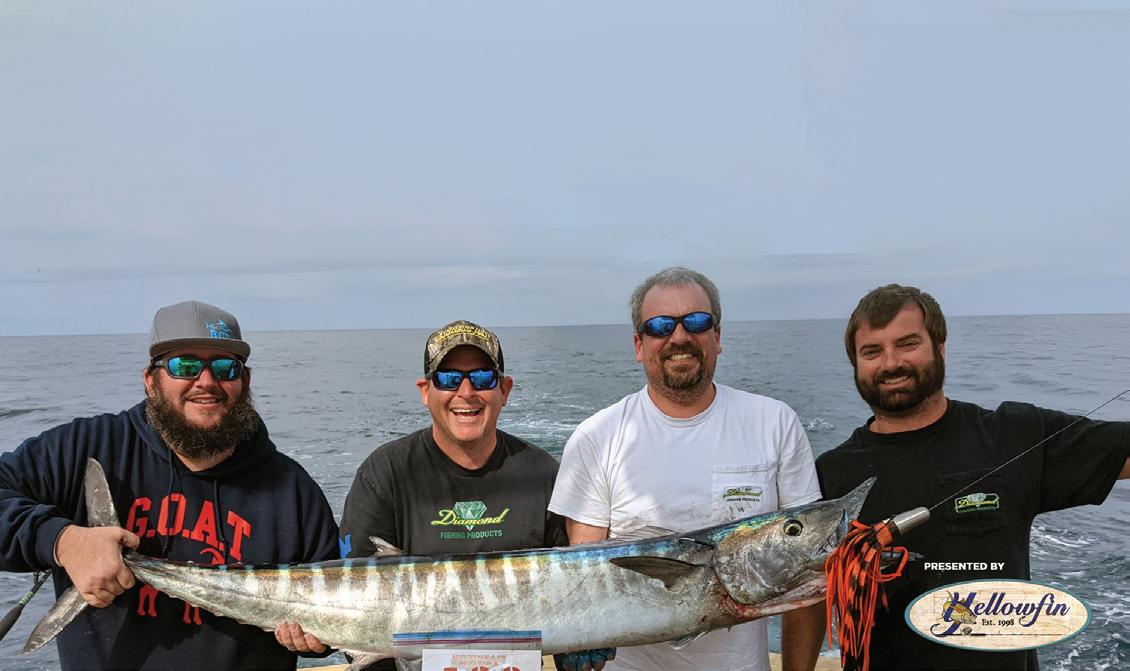

as “the world’s largest wahoo tournament,” the Northeast Florida Wahoo Shootout Presented by Yellow n will run from February 4-March 26, 2023 and allows anglers to select three days to sh within this 50-day window.
It’s a very cool format, because all wahoo anglers know just how ckle the bite can be when it comes to timing the moon phases and weather systems. Captains are required to notify tournament o cials the night before they plan to sh, and the heaviest three- sh aggregate wins the tournament. Each boat will be allowed to weigh two wahoo per declared shing day. If more than three sh are weighed for a boat through the course of the tournament, the lower weights are dropped. All eligible sh must be weighed at Strike Zone Fishing in Jacksonville or Melbourne.
e rst-place prize is a 21’ Yellow n Bay Boat with a 200 HP Yamaha 4-stroke and an AmeraTrail Trailer, all valued at $95,000. Second place wins a Kubota RTV valued at $16,000. e tournament pays cash through 10th place.
Registration for the Northeast Florida Wahoo Shootout is open now through Feb. 3. Early entry is $550 through Dec. 31. General entry is $600 through Jan. 26. Late entry is $750 until registration closes.
For more information, go to www.wahooshootout.com.
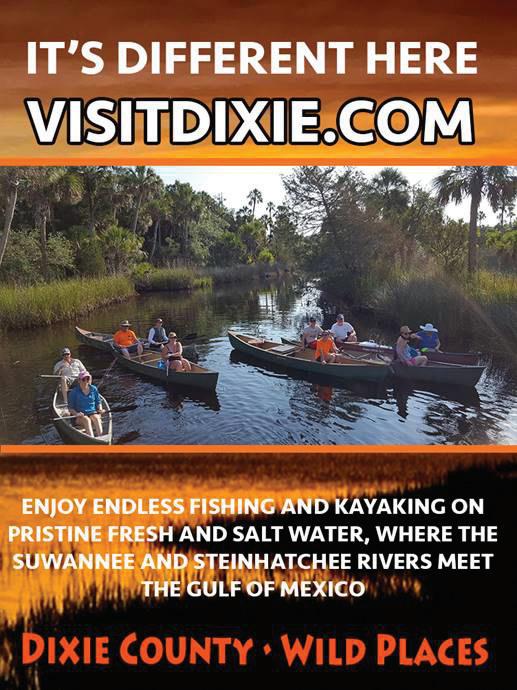





specializes in restoring many types of LCD displays, not just lens polishing! Many devices can be restored by replacing the internal polarized lm on the LCD, which degrades over time causing dark spots or fading. Electrically, devices may still be in perfect usable condition but the display is just unreadable.

Some devices cannot be restored/repaired, but we have remanufactured/ redesigned parts for several di erent devices such as Yamaha, Mercury and Suzuki. New LCDs, new lenses and button sets are now available for select models.





We provide lowcost alternatives to replacement as well as acrylic polishing, water spot and anti-glare removal, etc. No need to lose your engine hours, or those secret saved shing spots on the plotter!

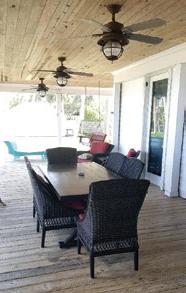
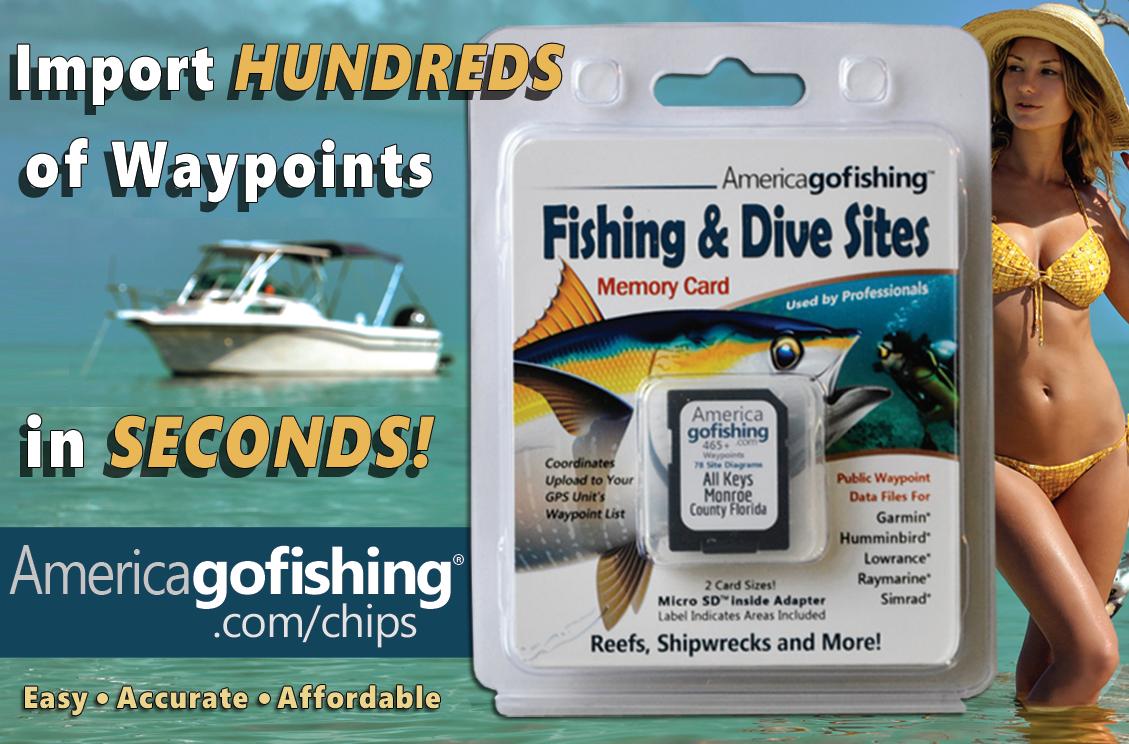
to see if we can help! (For our local customers, we are now installing electronics, lighting and more. Contact us for more details. All technicians are NEMA Certi ed.)




Before you replace your old electronics, visit

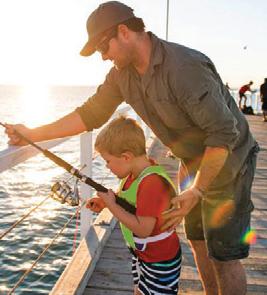

Like fishing, hunting is for early risers — those who find contentment and peace in getting out into nature early. But that’s not all you’ll find in wild Florida. From the Panhandle to the Everglades, we have some of the most accessible and affordable public hunting lands in the country. Six million bountiful and beautiful acres are closer than you think. So if you’re already an early riser, rise to the exciting challenge of hunting today.
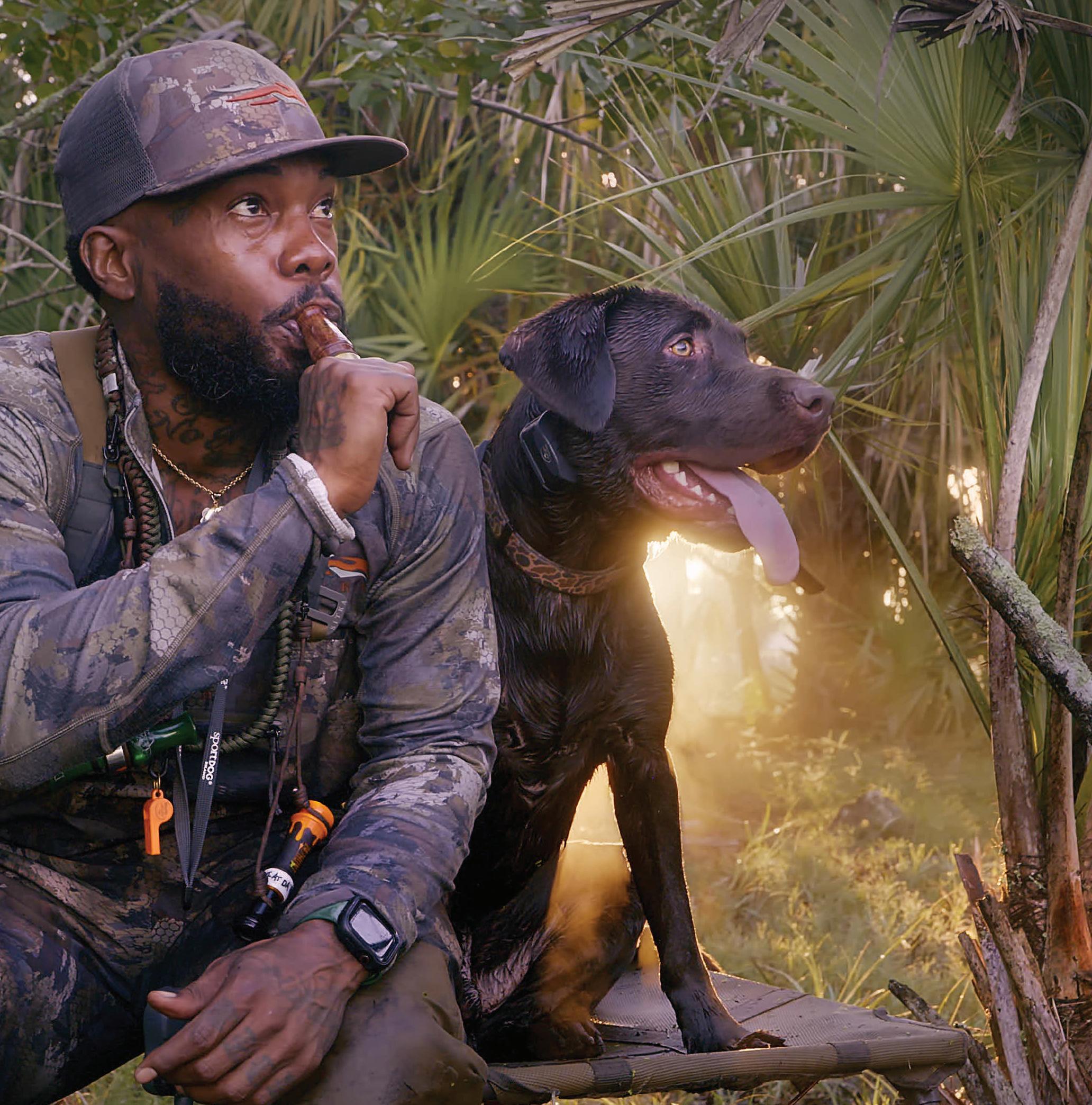
In the history of timepieces, few moments were more consequential than the advances of the 1920s. Currently, inflation is roaring, which we’ve decided to fight by turning our prices back to the 1920s.

During that era of jazz, speakeasies and flappers, wristwatches came into their own, resulting in some of the greatest designs of all time. It’s that legacy that we’re honoring with the Vintage ’24 Watch, available exclusively through Stauer at a price that only we can deliver.
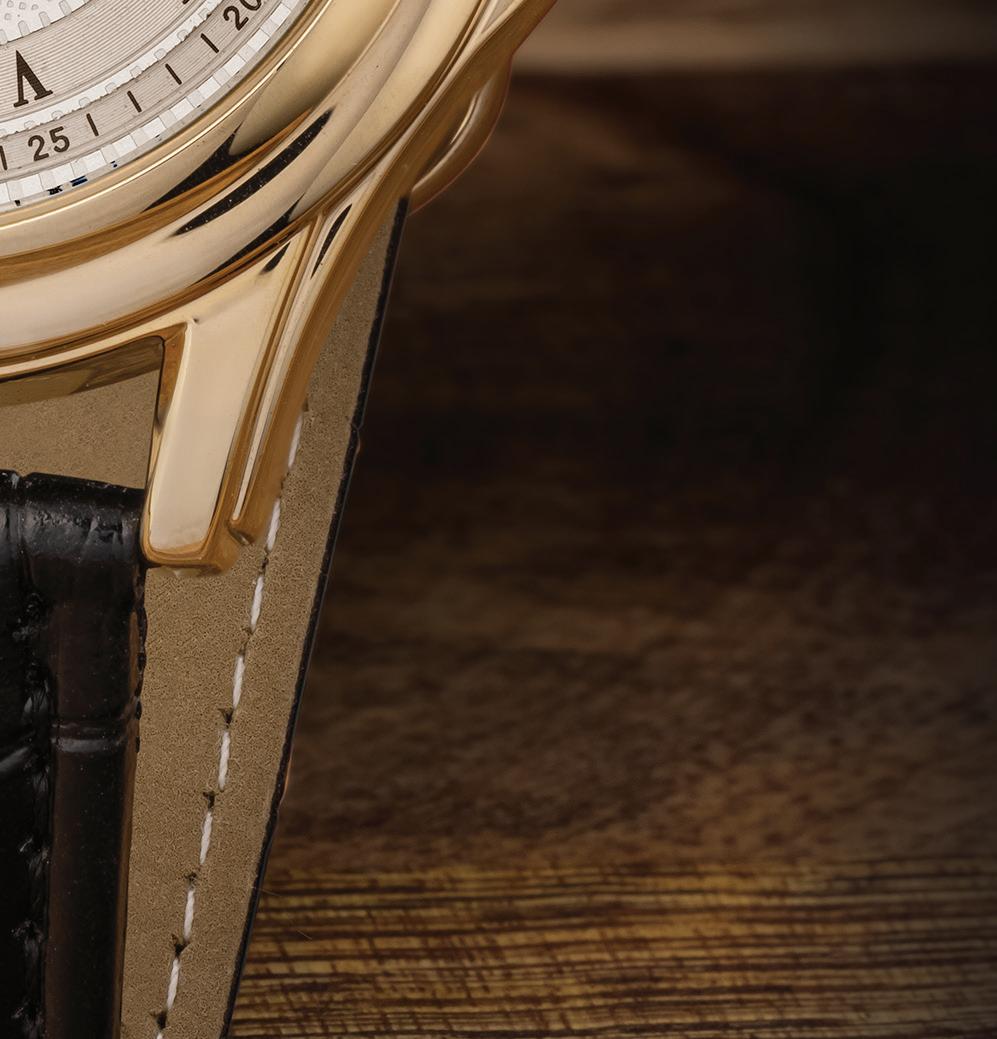

Before World War I, most people carried pocket watches. In that conflict, soldiers adapted their old pocket watches so they could be worn on their wrists as they dove in and out of trenches. By the war’s end, nearly every soldier wore a wristwatch. In peacetime, demand flourished, as did fantastic designs by some of the greatest watchmakers we know today.
That’s where we come in: Instead of charging you $20,000 for a jazz age-style timepiece from some overpriced marketing department, we’re asking for just $29 for an even more stunning watch! We’re talking about a gorgeous two-tone timepiece with a durable Cotswold™ crystal and a precision movement that vibrates at a frequency of exactly 32,768 times per second! With its guilloche-patterned face and refined Roman numerals, this watch is where innovation and class meet.


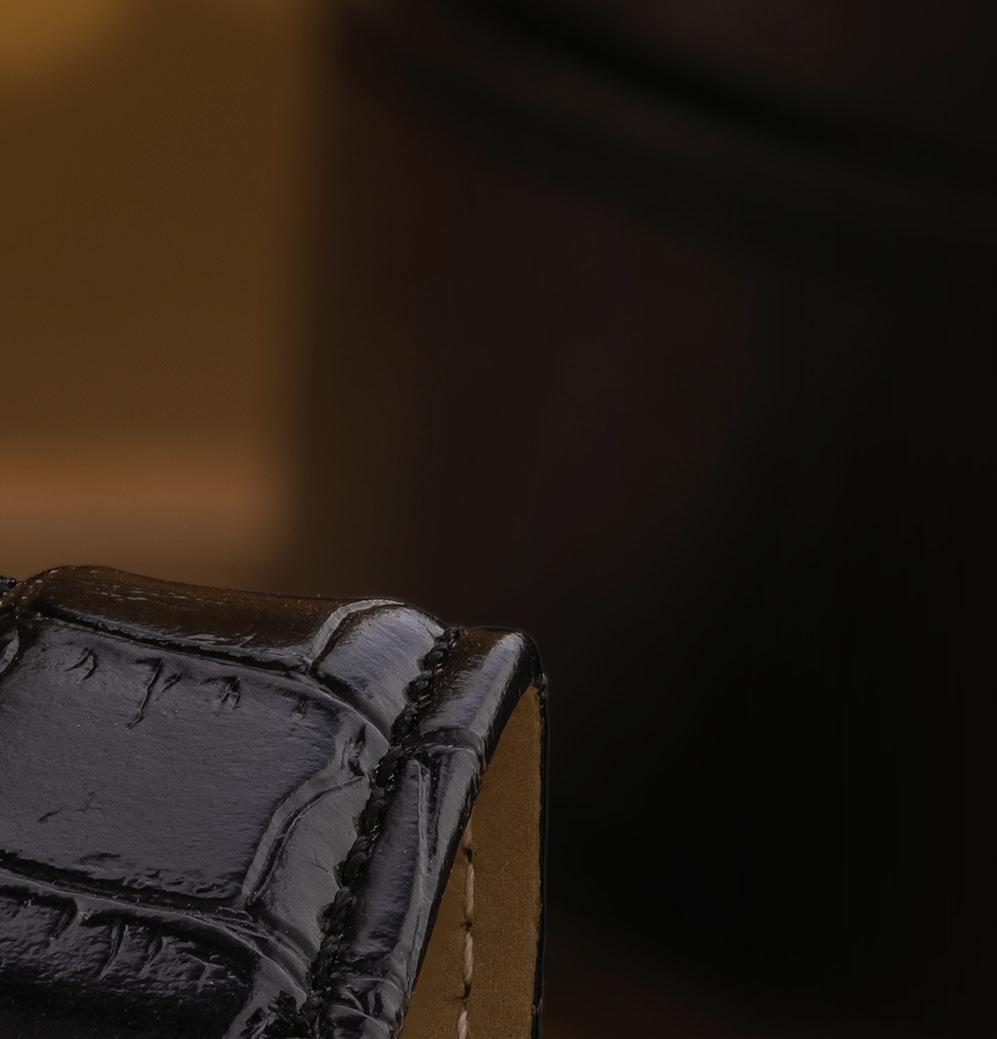

How are we able to extend such an incredible offer at such a low price? Through the use of modern technology, our artisan watchmakers are able to craft a timepiece that’s more accessible and even more beautiful than watches from our competitors. Call today to secure
own marvel of timekeeping history. A
like this doesn’t come along every day. Because of the time it takes to craft these stunning mechanisms, we can only offer 1,237 846 with this ad. Call today before they’re all gone.
time
engineering masterpiece for
for less, simply send it back within
for

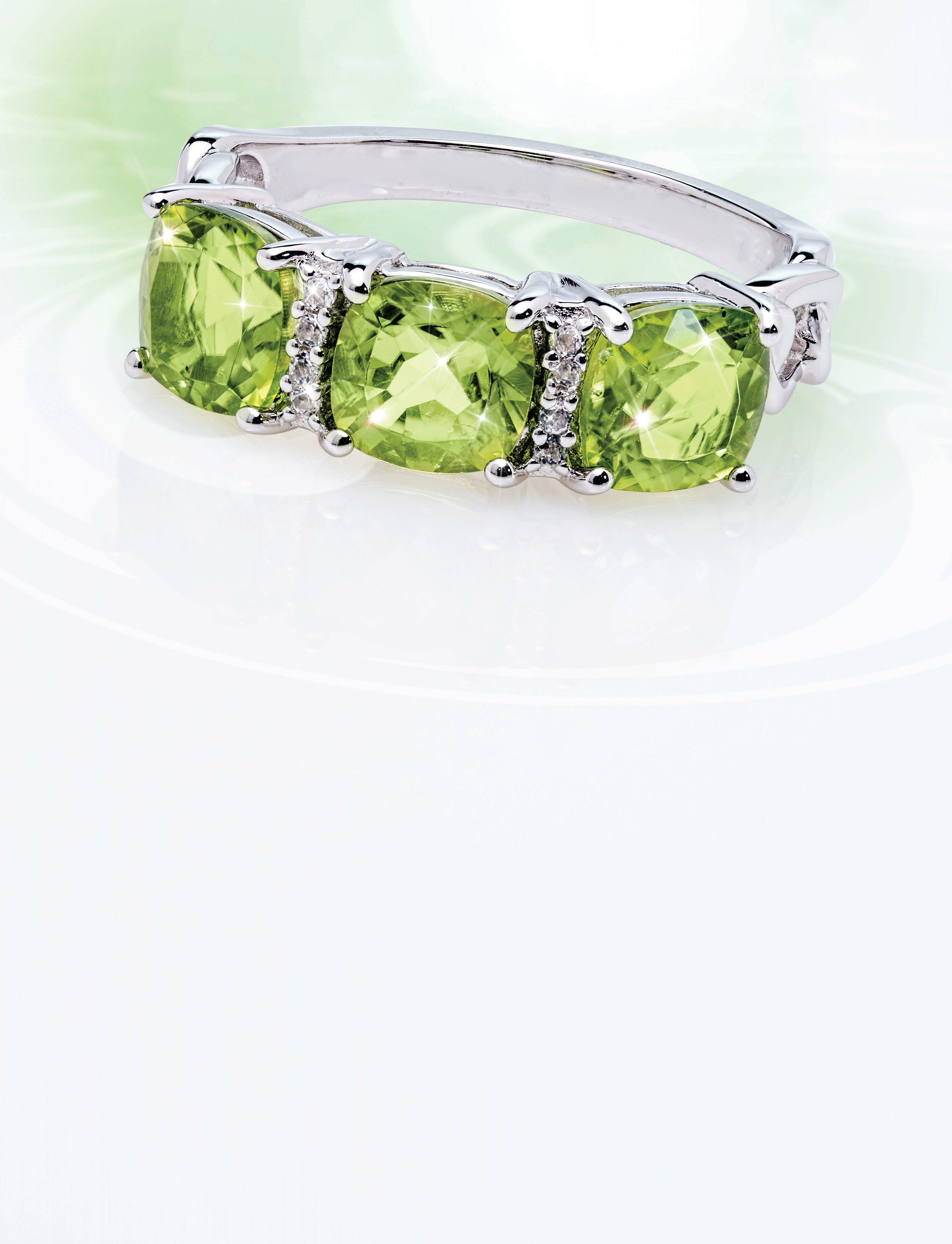
In September, I embarked on one of the craziest adventures I’ve ever experienced to sh for crazy exotic species on the Rio Guaviare deep in Columbia’s Mapiri Jungle.
Just getting there was an adventure. We spent two days ying from Miami to Bogata and then to San Jose, Colombia, which was a buzzing little town where we picked up last minute supplies, ate a breakfast of pirahana head soup and got wrist bands tied by an elderly women and her pet spider monkey, Kiki.
At the port, we loaded gear in a small shaded boat powered by a Yamaha 200 2-stroke, with a spare lower unit tied on top. I was accompanied by my cameraman Adrian, from Poland, good friends Jake, Derek, Karl, and our jungle guide Diego, from Chile.
We set out downstream and rode for hours, passing through two army checkpoints, before we reached our halfway point at 118 miles. We stopped for lunch and to refuel at an isolated jungle town only accessible by boat. As we creeped up muddy stone steps, we were shocked to see a small town with convenience stores, restaurants, a playground, a basketball court, and happy people everywhere. It was a cool window into a di erent reality.
A er playing soccer with the local kids and a delicious fried sh lunch, we headed farther downstream. When darkness arrived, the jungle came alive and our driver did not feel comfortable navigating the rapids at night. So we stopped and Diego traded goods with an indigenous man for permission to sleep at his house. Some opted to sleep in the boat. e mosquitoes, hornets and massive cockroaches made it tough to sleep. A er long hours, the sun nally rose, and we headed another 45 minutes downriver to base camp, where we discovered we were in for even more travel.
We packed lighter for three days of shing and camping at a sacred waterfall inhabited by one of the jungle tribes. It was another 2.5 hours downstream to a small creek that would lead us up to a second camp. We shed our way up the creek.
On my rst cast, a 15-pound sardinata exploded on my popper boatside. Imagine a huge pilchard but with sharp teeth and hyper-aggressive topwater strikes. Fully grown, Sardinata can weigh 25 pounds. is one threw the hooks, and shing only got crazier from there.

I was throwing a 9-inch Countdown Rapala in Firetiger at the tree line and retrieving it to the boat. Almost every cast we hooked massive payara. is sh is similar to a tarpon, with silver scales, acrobatic leaps and a bony mouth that made hook sets di cult. Payara have long fangs on their lower jaw capable of slicing thick-scaled sh and shing line with ease. ey are without a doubt the most challenging, unique and aggressive jungle predators I’ve ever targeted. I managed to catch quite a few on y and spin tackle.
Another unique species was a matrinxa, a silver-scaled delicacy. ey are omnivorous and sit below trees to eat dropping fruits and nuts. ey also hit lures with insane power. ese sh were extremely hard ghting and very tasty. ey have teeth like human molars for cracking hard nuts.

Red bellied pacu are another ferocious species we caught. ey have a similar ambush style and diet to the matrinxa. ey are equally aggressive and display gorgeous hues of purple and black
Iwith a blood orange/red underbelly. Black and red bellied pirahana were in no shortage, either. A er three days of shing by the waterfall, we headed back to base camp for new species.
Heavy rains raised water levels, which busted our hopes to catch big peacock bass. But it opened a new door: catching monster cat sh.
I caught several new species of large cat sh. One of the most unique was a ripsaw cat sh. ey have so lips and a long face, similar to carp. ey also have a sharp chainsaw blade for a lateral line, earning them the nickname “Caiman Killer.” I caught small tiger shovelnose cat sh, as well as red tail cat sh. Red tail cat sh are one of the strongest ghting cat sh I’ve ever encountered. It took three days of break-o s before I was able to muscle one up. It weighed 40 pounds.
Fishing the jungle is tough, and it is not for everyone. is trip scarred me with bug bites from head to toe, and I su ered many bee and hornet stings. It is not comfortable in any sense, but it is good for the mind. ere’s no cell phone reception; you are stripped of everything. e only thing that matters is the present moment. For me, it is the biggest adrenaline rush to travel into the unknown and learn about new shing and culture.
Check out Ryan Izquierdo’s YouTube Channel, “Ryan Iz Fishing” for a series called “Jungle Jeopardy.” E-mail him at Ryanizquierdoyt@ gmail.com with questions or to nd out how you can go on one of these trips.


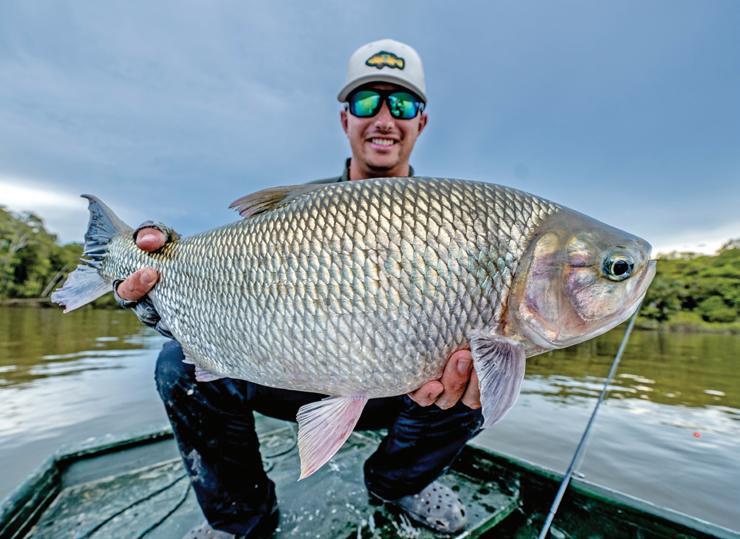



“Known as ‘the Evening Emerald’ because its sparkling green hue looks brilliant any time of day.”
— The American Gem Society (AGS)

Going over the top on jewelry doesn’t have to mean going overboard on the cost. We’re in the business of oohs and ahhs without the ouch, which is why we can bring you an e ervescent verdant peridot ring for a price that simply can’t be beat. Its vivid and unique color makes verdant peridot unlike any other green gemstone. If you are looking to mark a milestone or make any occasion special, the Verdant Peridot Ring is all you need.
is elegant ring features 2 1/3 carats of captivating verdant peridot in three perfectly-faceted cushion cut gemstones. And, the .925 sterling silver setting is nished in tarnish-resistant rhodium for added durability and superior shine.
“Found in lava, meteorites, and deep in the earth’s mantle, yellow-green peridot is the extreme gem”
Gemological Institute of America’s Gem Encyclopedia
Peridot• White
You could easily spend $400 on a sterling silver ring set with peridot stones. But, with Stauer in your corner, the sky’s the limit for a ording the extraordinary. Priced at just $39, you can treat her to the Verdant Peridot Ring set in .925 sterling silver and save your money and your love life all at the same time. Satisfaction guaranteed or your money back. Indulge in the Verdant Peridot Ring for 30 days. If you aren’t perfectly happy, send it back for a full refund of the item price. Limited Reserves. Don’t let this gorgeous ring slip through your ngers. Call today!
PRAISE FOR STAUER PERIDOT JEWELRY “...absolutely beautiful. The picture does not do it justice. It is a real stunner.” – S. C., Berkeley, CA
Verdant Peridot Ring (2
Special
Stauer.com without your
ctw) $299† $39 +S&P Save $260




price.
TPR 6
code.
14101 Southcross Drive W., Ste 155, Dept. TPR256 02, Burnsville, Minnesota 55337 www.stauer.com
Rating of A+



sterling silver setting • Whole sizes 5-10 Stauer… Afford the Extraordinary


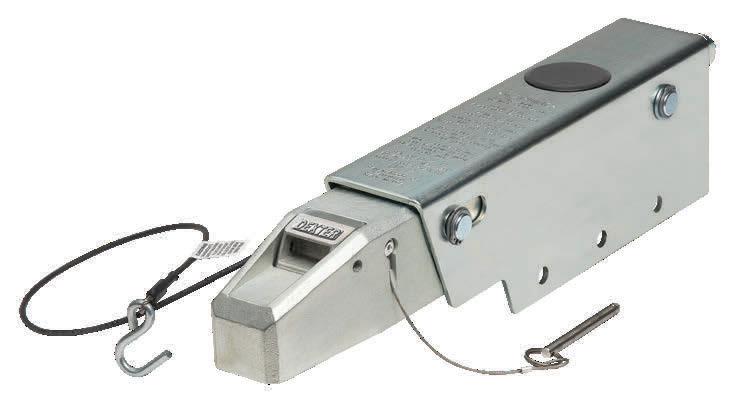
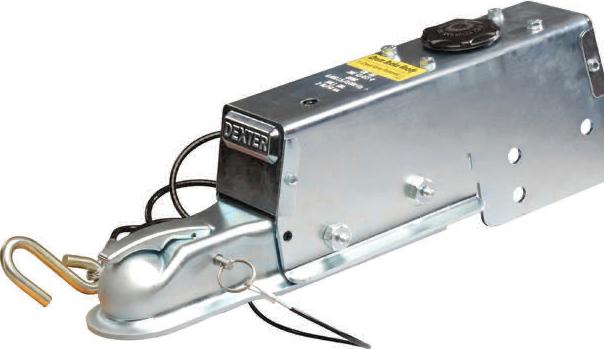




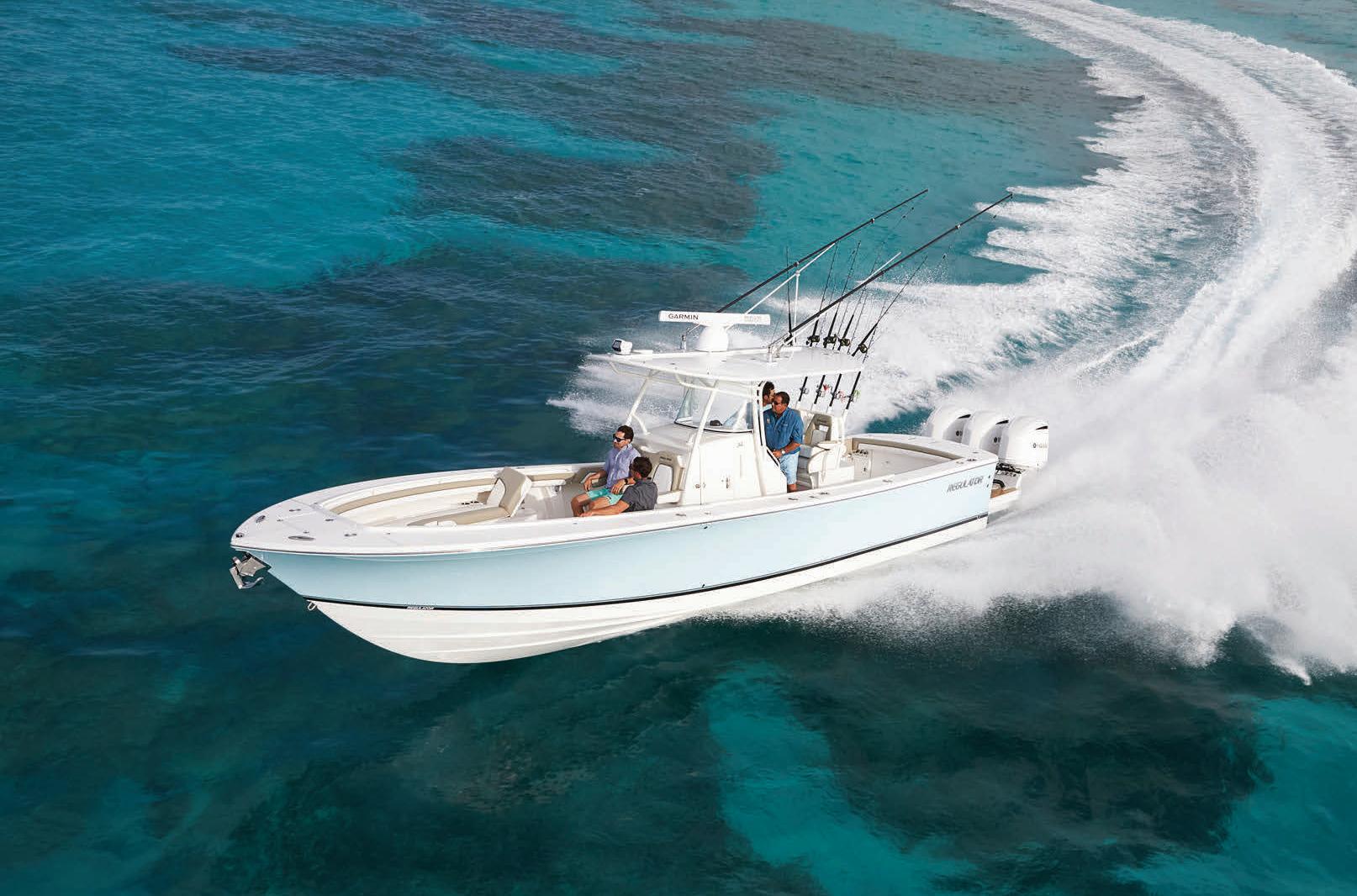














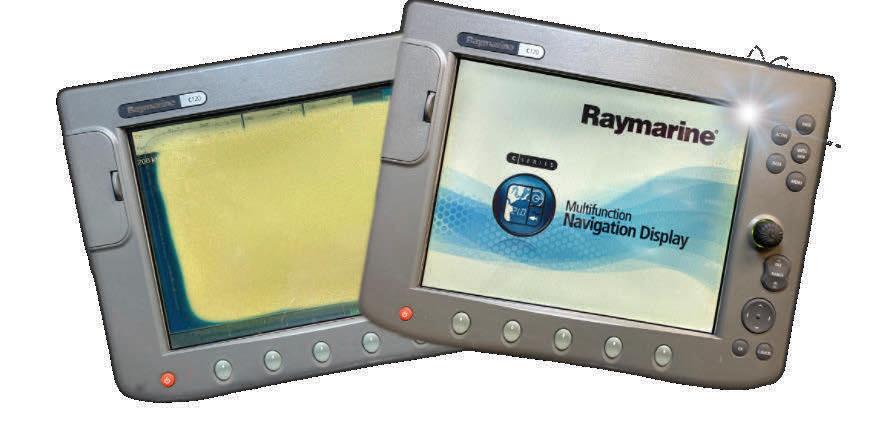




more to Alaska’s Kenai Peninsula than world-famous salmon runs. e saltwater shing is also phenomenal, with species like halibut, salmon shark, ounder, yelloweye rock sh and ling cod being primary targets.

When you run out of Seward to Resurrection Bay, you might see some of the Deadliest Catch boats, and you might see multiple species of whale. We saw a lot of humpbacks this past summer. At more than 900 feet deep, with glaciers around the rim, the bay is awe-inspiring. ere are several good charter operations. Some make long runs for big halibut, while some o er shing that’s a little more local. Check with J Dock Fishing Co. in Seward for the latest shing information and charters. If you’re more of a DIY angler, Miller’s Landing in Seward o ers lodging and charters, and they also rent boats and shing equipment. If you want this option, book early. I have mine booked for next year, already.
Homer is the Halibut Capital of the World,

and it’s another great Kenai destination. We went with some friends and got on some good Halibut! I’m new to the electric reels we used. You had to time the hook-set just right. It took several bites to gure it out, but we caught sh once we got the hang of it. I pulled one a good way o the bottom before it decided it wasn’t coming in and broke a 150-pound-mono leader! We caught several good keepers and turned the smaller ones loose. ere are plenty of charters in Homer. North Country Charters is a great one that o ers halibut and salmon trips. ey will put you on some big halibut. My largest weighed 99 pounds, but North Country catches sh that are much larger.
If you want a long-run charter, check out Casino Charters. If you want to catch sh from the beach, check out Family Shore Fishing. ey set you up with a guide, shing rods and bait at Lands End, which juts out into the bay. Fishing low tide on the shelf, you can catch cod, ounder and halibut. We lled a cart with cod
and ounder in less than two hours shing from shore. en we went back another day without a guide and wore them out again!
Fishing in Alaska is just like anywhere else, once you learn what works, you can do it over and over. ere are lots of di erent kinds of shing there, but once you learn where and how to catch them, you can do it yourself.
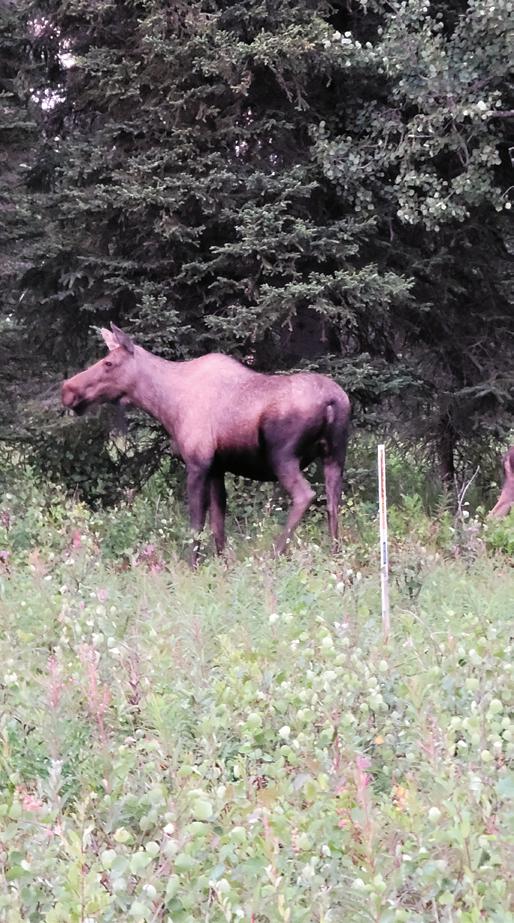



On this past summer’s trip, as we were headed to the airport to go home, we drove along Cook Inlet and spotted a school of beluga whales swimming the shoreline. You never know what you’ll see in Alaska. Some things are just so amazing!
I’m currently pulling together next summer’s trip to Kenai, and I’m making a short guide of things traveling anglers might want to know. Feel free to shoot me an email with questions.
For more information, contact Gary Turner at gary@purgeright.com.

About 50 years ago, Ralph Vodicka lost one of his favorite rod and reel combos when his boat capsized in North Carolina’s unpredictable Oregon Inlet. Recently, Vodicka was reunited with his 9-foot rod equipped with a Fin-Nor 4 spinning reel, and it still works!
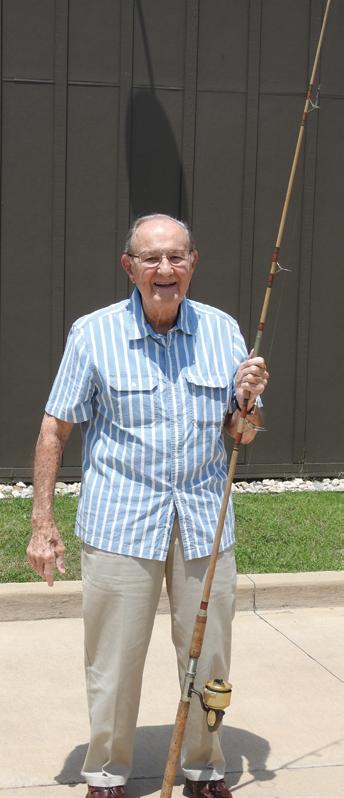
Here is a brief recount of the amazing story reported by Summer Stevens in e Coastland Times.
In fair weather in the early 1970s, Vodicka and three buddies attempted to return through Oregon Inlet a er shing o Hatteras National Seashore in a 17-foot 1966 Boston Whaler. e outgoing tide colliding with incoming rollers created rough conditions, even for a large trawler the anglers watched navigating the inlet. Vodicka was faced with a decision. ey could either wait for the tide change, which would force them to make their run in the dark. Or they could go for it.
“Waiting it out would put us in the middle of the night,” Vodicka remembered. “We decided that the best choice was to race on in while we could see. I told everyone, ‘Hold on, don’t move. We’ll ride on the back of one of the breaking waves. Even if it takes a little water, it’ll be ok.’”
In the middle of the inlet, as they were taking on water, a line caught in the prop and it stopped turning. e boat was at the mercy of the tide and waves, and an 8-foot breaker ipped it end over end. e story of the exciting rescue is reported in detail in e Coastland Times. It involves the captain of an old 25-foot boat and his grandson risking great peril to time the waves and rescue each of the anglers one at a time. Vodicka’s badly damaged Whaler was later recovered, and he lost a bunch of shing gear, including the rod and reel that began this story.
e details are lost to time, but apparently the Fin-Nor reel and the rod were hauled up in a commercial angler’s net. e unique set-up ended up doing decades of duty as a showpiece on the wall in Dennis Dudley’s Elizabeth City, North Carolina home.
Vodicka,” and Dudley tried to locate the Fin-Nor’s owner when he received the rod in the mid-1970s. Dudley’s phone book searches came up empty, and the search was forgotten… until recently.
Dudley, 78, remembered the mystery of the reel’s owner while going through his possessions. A quick Google search turned up Vodicka, who is 89 and living in Raleigh, N.C. e men met to eat lunch, and Vodicka was reunited with the beautiful rod and reel he lost half a century ago.
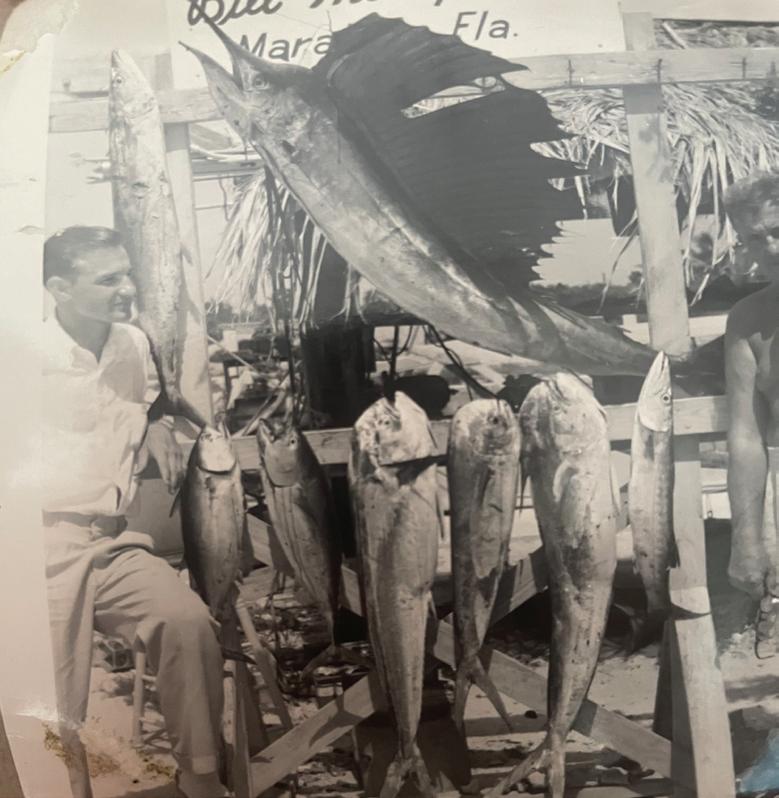

Amazingly, the antique Fin-Nor is already back in action. Instead of hanging it on the wall, Vodicka had it serviced and used it on the Neuse River over Labor Day weekend.

e reel was equipped with a custom plate engraved with “Ralph E.
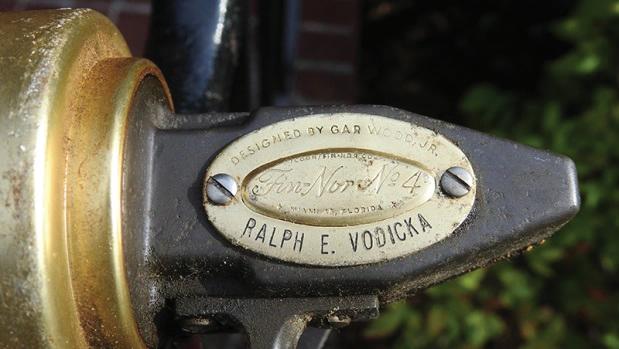

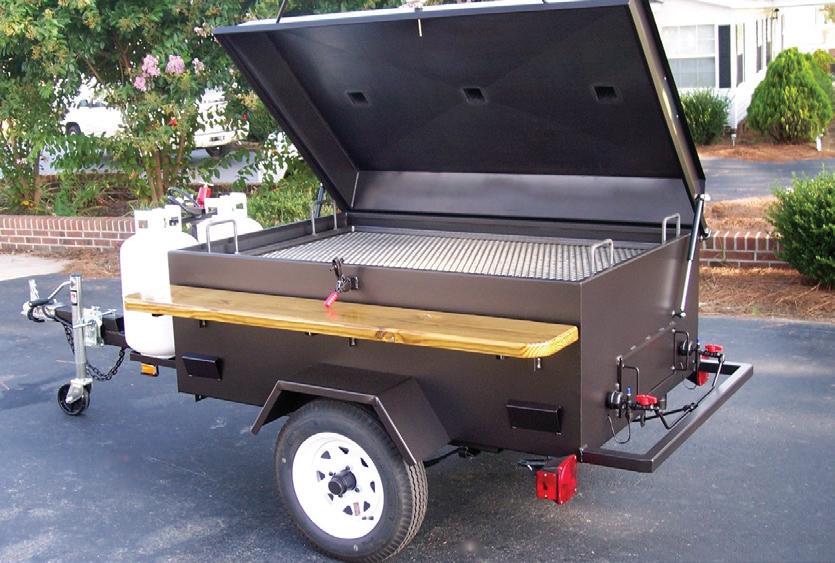
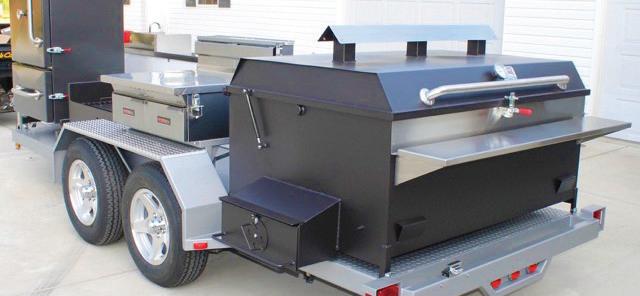
“It worked. It worked ne,” he said. “It’s amazing that a er 50 years you get your favorite rod and reel back.”
To read the whole story, go to www.thecoastlandtimes.com.
Everyone hates a cheater, which is why it’s no surprise that tempers ared when two cheaters were caught red-handed at a Lake Erie Walleye Tour (LEWT) event on Oct. 1. e event was the tour championship for the series, and the Team of the Year would also be crowned a er weigh-ins. Team Crankin’ Hogs brought to the scales a ve- sh limit that weighed more than 33-pounds. It It would have secured Jake Runyan and Chase Cominsky well over $20,000 for the championship win and for Team of the Year honors. ey overplayed their dirty hand.
Tournament Director Jason Fischer suspected something was amiss when the sh hit the scales. Fischer later told CNN that the sh looked like they should have weighed 4 pounds each, but the total weight indicated they were much heavier. He handled the sh and felt something hard inside one of them.
In a now-viral YouTube Video, Fischer guts the sh as the cheaters stand by silently. “We have weights in the sh!” Fischer announced, and that’s when the shouting started as other anglers hurled obscenities at Runyan and Cominsky.
All-told, there were 8 pounds worth of lead weights, llets from other walleye and a pair of pliers inside Team Crankin’ Hogs’ sh. ey were immediately disquali ed and banned from the tournament series. Both men were later indicted by an Ohio grand jury on charges of cheating and attempted grand the .

It will be interesting to see if the team’s other tournament wins are called into question. ey have won numerous events over the last couple of years, including the 2021 LEWT Championship.
For more information, go to lakeeriewalleyetrail.com.
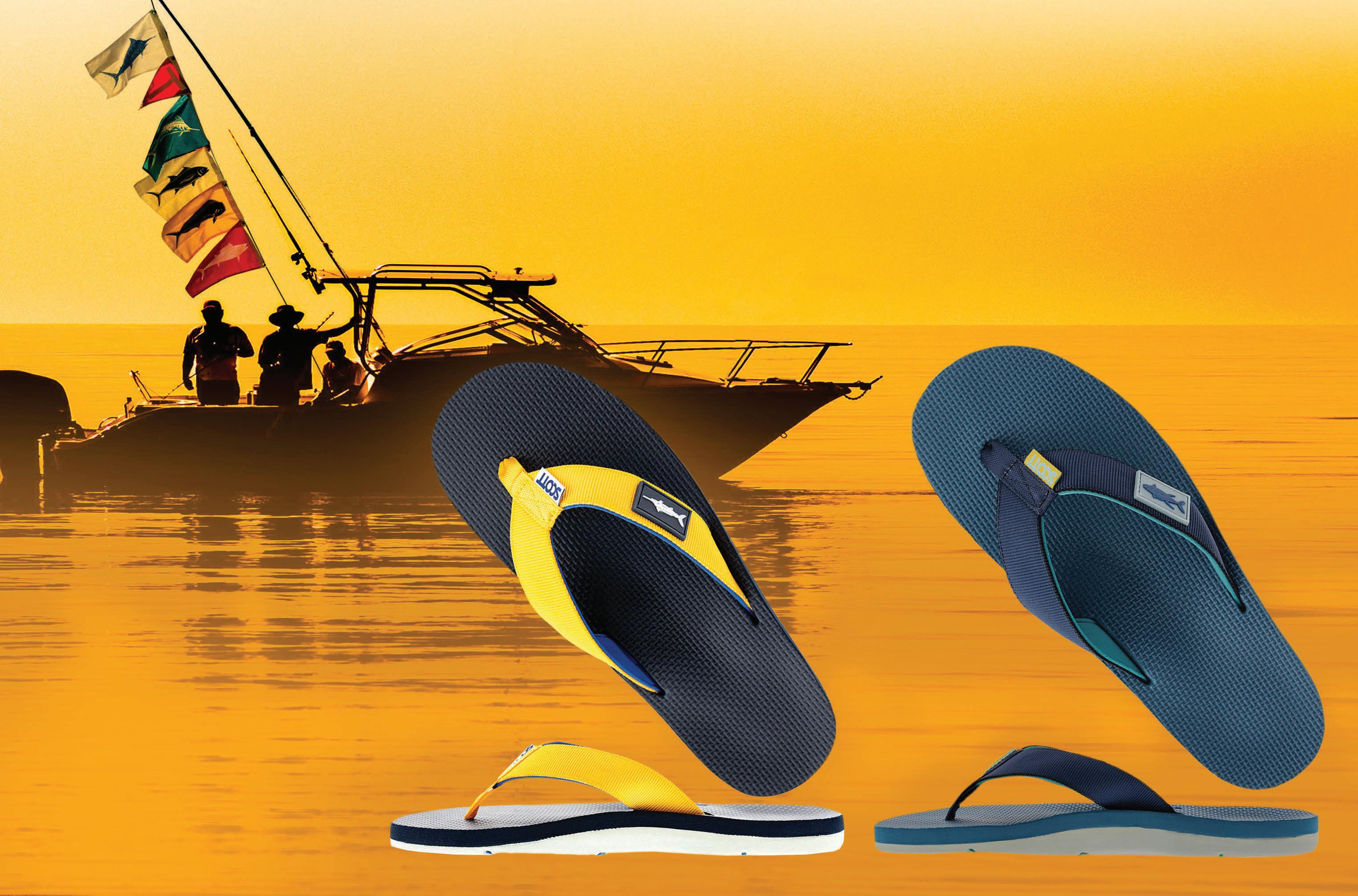

You raise the flags of the fish just caught to show you weren’t skunked.
Once onshore you can take it a step further showing your fellow anglers your catch of the day wearing “slippahs” from Scott Hawaii.

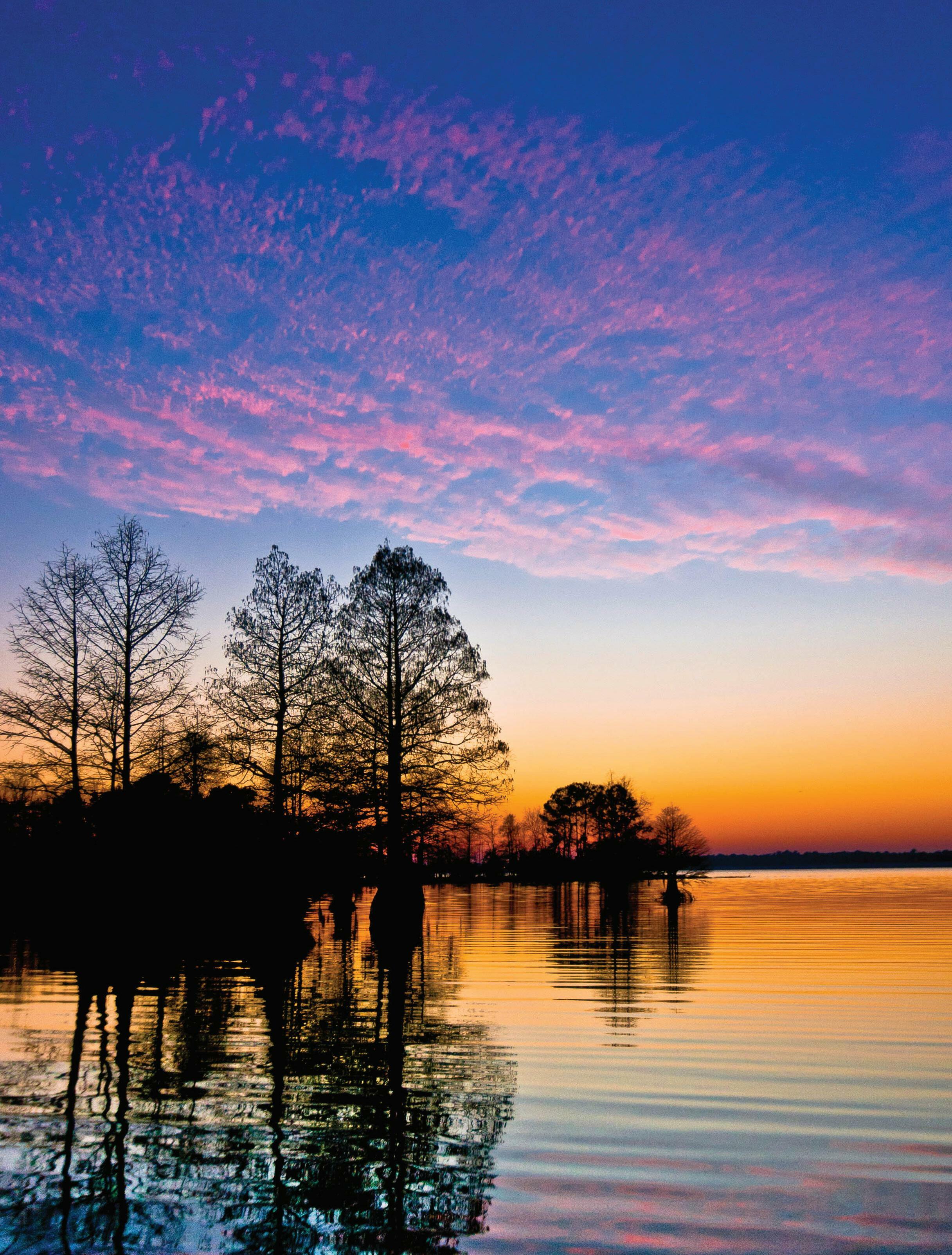
Berkeley County is a wonderland for outdoor enthusiasts, sports bu s, adventure seekers, and water lovers. From exemplary fishing for striped bass, or a trophy largemouth bass, to our hiking trails and water activities, along with scenic outdoors where you can catch a glimpse of white tail deer and gators, Berkeley County has activities to fit all visitors and families.



one



look
men’s watch has always
world of fashion.

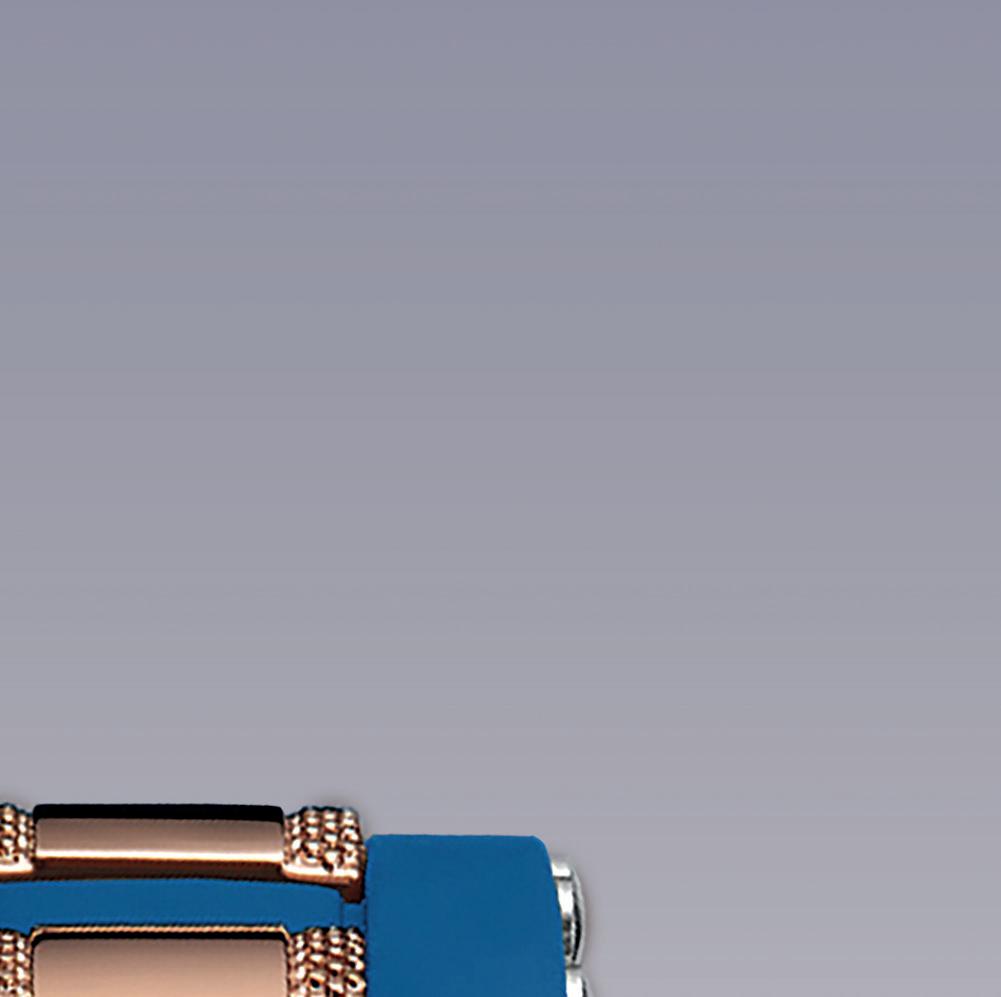
functionality has long been the







After many years, mastering and honing the construction, design, and look. We bring you a durable rubber strap that will withstand everything the elements throw at it. Three precision sub-dials featuring a split second, minute, and second, as well as being water-resistant to 3ATM’s. This watch is the epitome of style and sporty design.

Your journey is at an end you can rest in the knowledge that this superb-looking timepiece will stand out on the wrist. High-quality materials and design will endure the ravages of time both in terms of remaining fashionable and stylish yet durable enough to be worn every day whether at work, rest, or play.

When we rst introduced this outstanding looking timepiece we sold out within days especially considering the very special lowcost o er of only $99 plus S&H. To avoid disappointment hurry and order today using the toll-free number below and quoting the promo code or by visiting our online store and entering the code before checkout.






